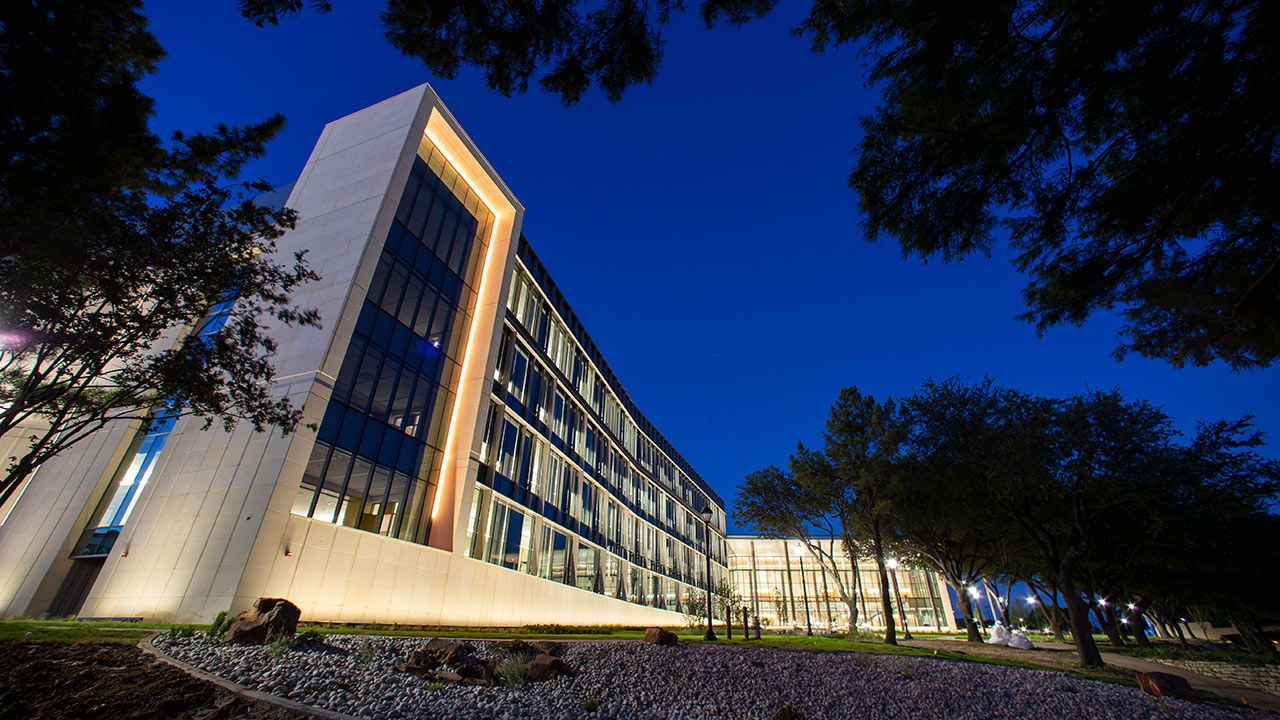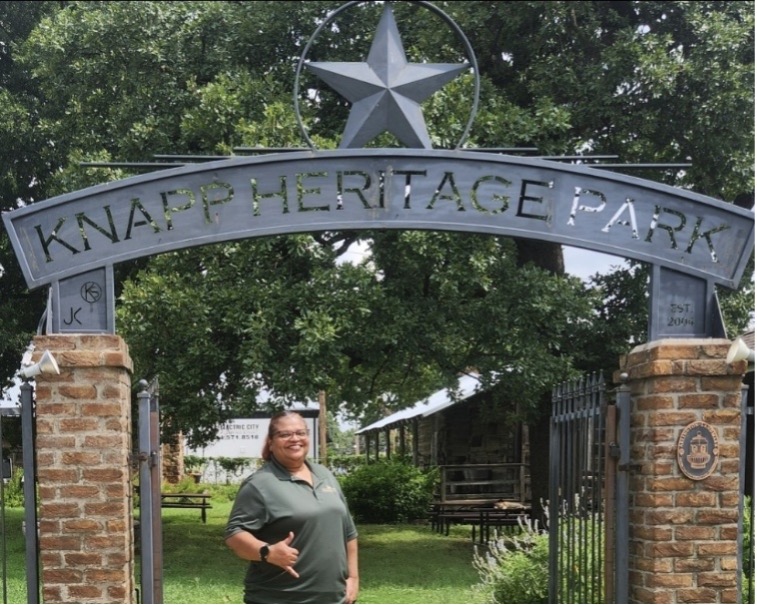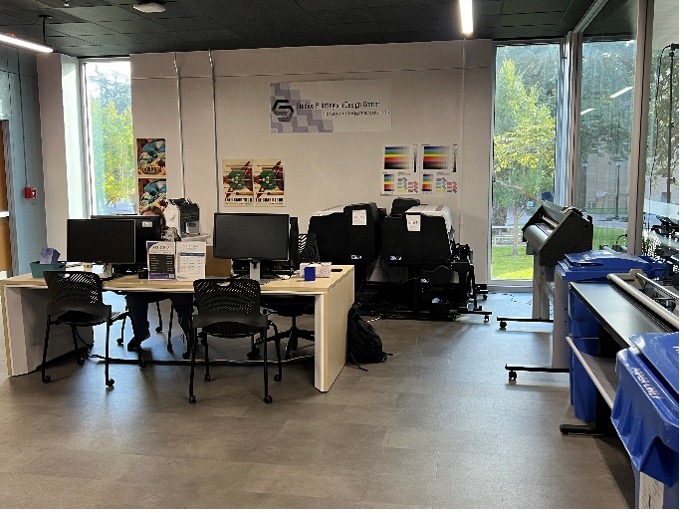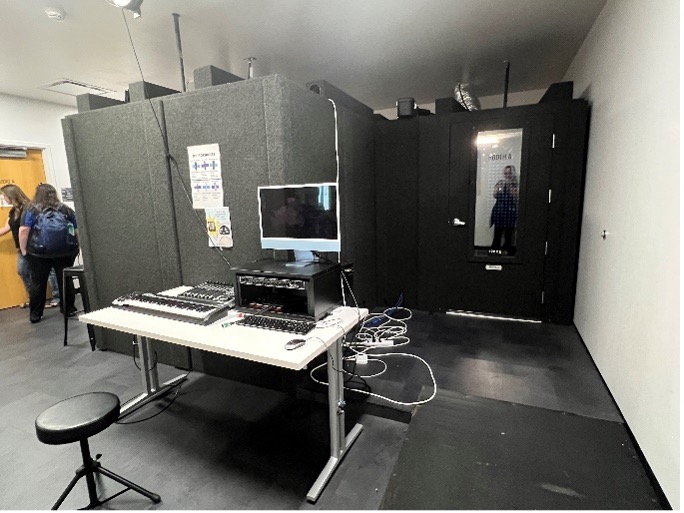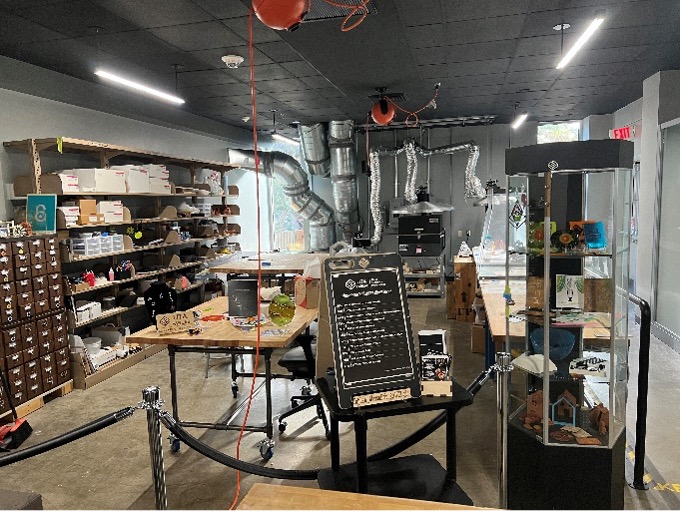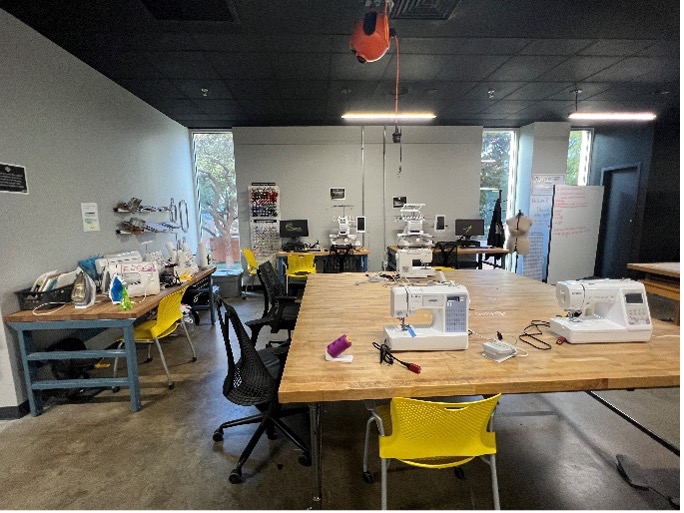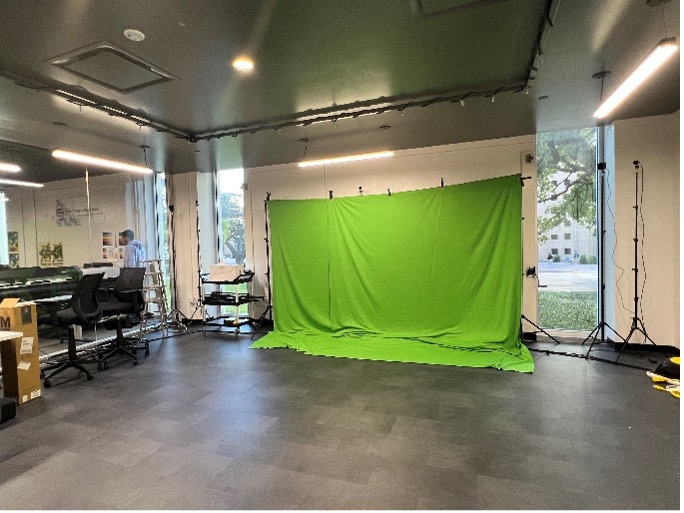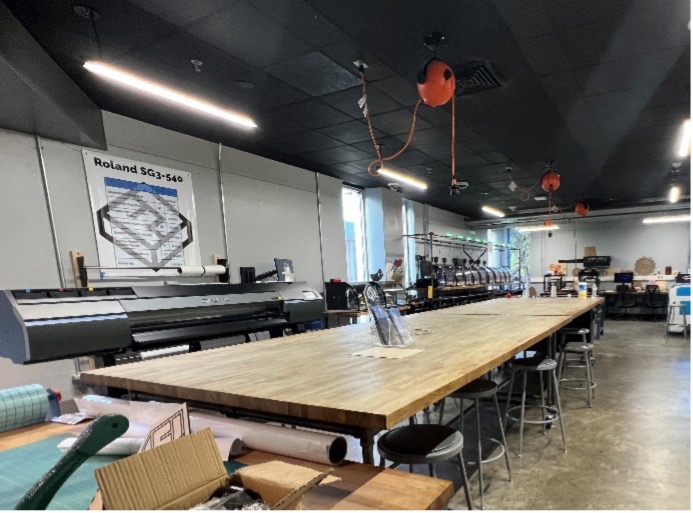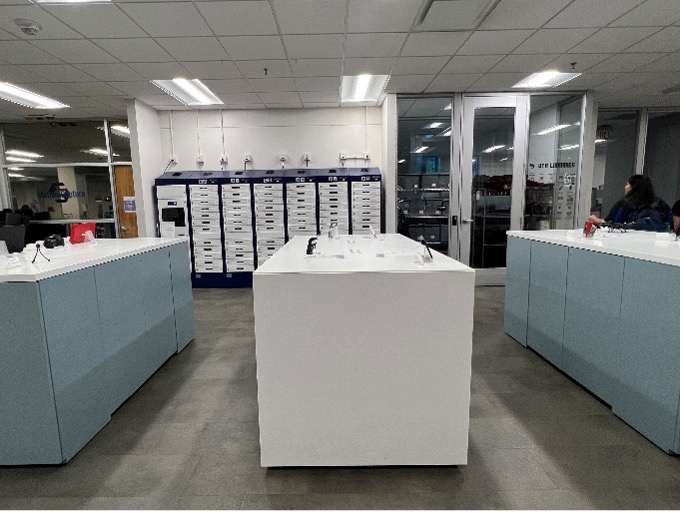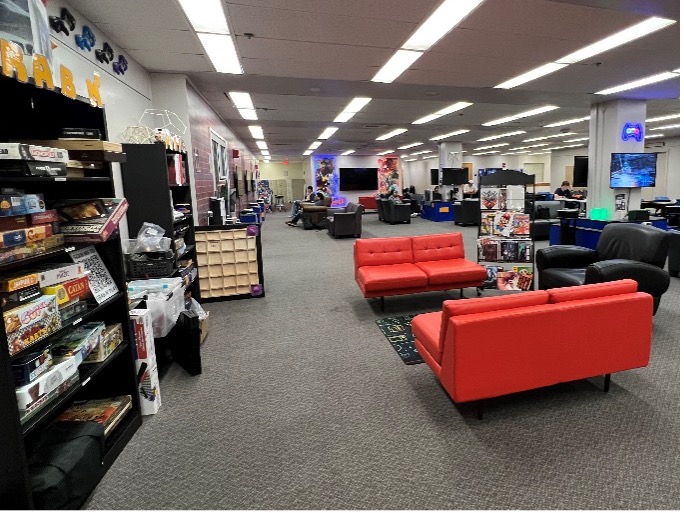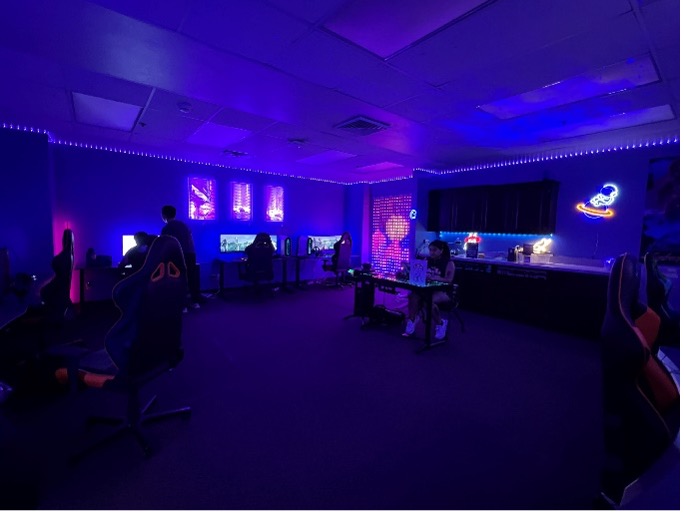Newsletter Archives
Maverick Momentum Graduation
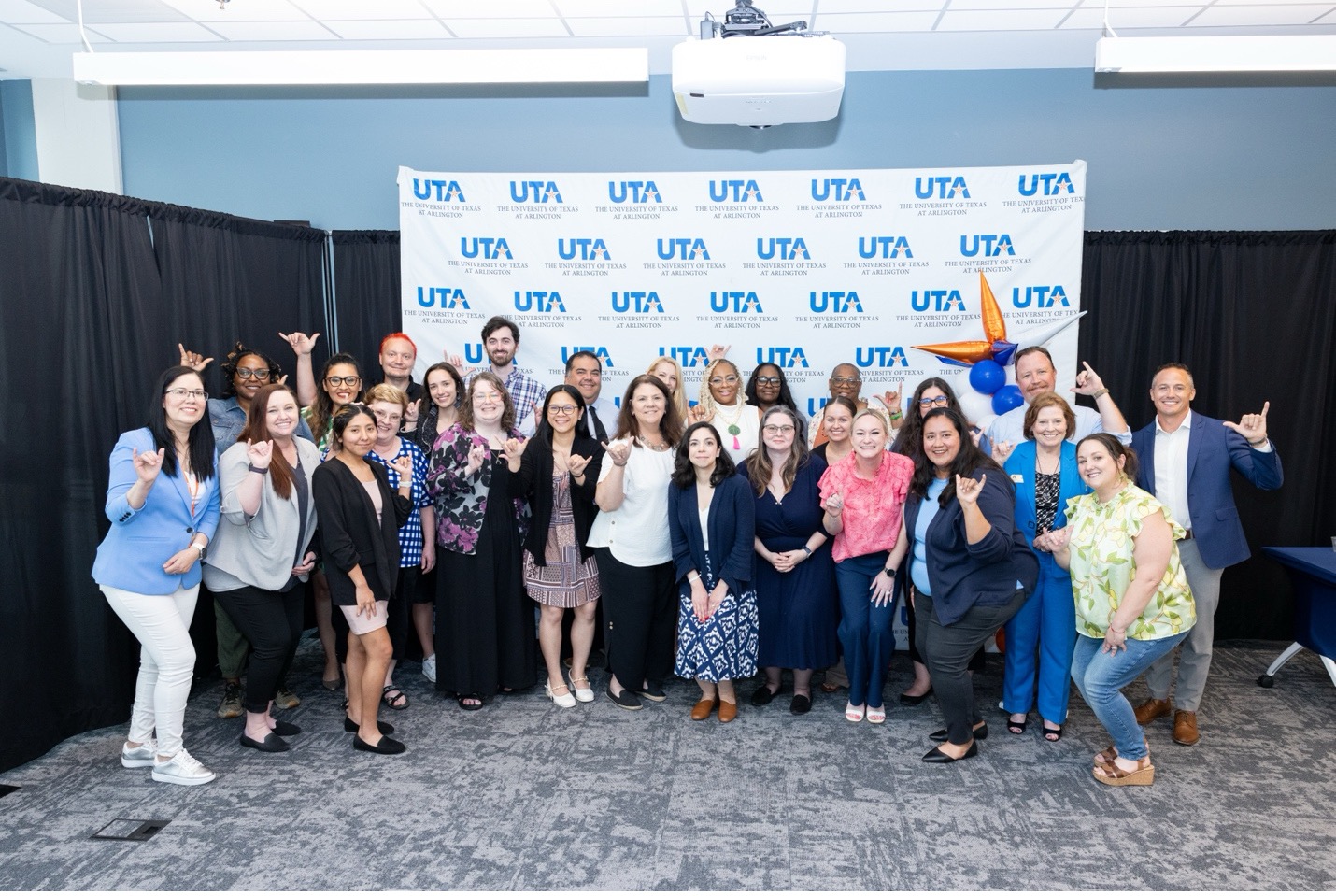
Article by Alyssa Foy
Congratulations to the second cohort of Maverick Momentum graduates, who celebrated with a graduation from the program in June! The Maverick Momentum program is a partnership between SAC and TCE to further develop employee engagement on campus. For more information on joining the next cohort, visit the Maverick Momentum webpage.
Catalyst Award
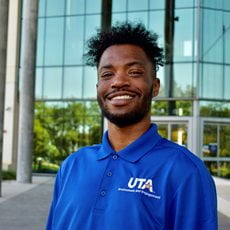
Article by Alyssa Foy
SAC Historian Tristian Brooks and his team in the Office of Student Organizations were awarded the Catalyst Award for Student Experience at the Anthology Catalyst Awards, hosted by EdTech company Anthology.
“The Office of Student Organizations at the University of Texas at Arlington has leveraged Anthology to drive a transformative, high-impact initiative that enhances student engagement, streamlines processes, and improves outcome,” according to Anthology’s announcement. “Its groundbreaking work has been successfully adopted and scaled at peer institutions, setting a new benchmark in educational technology. This dedication to innovation, collaboration, and industry leadership makes the Office of Student Organizations a deserving recipient of the Catalyst Award.”
Congratulations to Tristian Brooks and the Office of Student Organizations!
Years of Service
Cheryl Donaldson
Article by Lauren McLain
Parlez-vous francais?
When Cheryl Donaldson first moved to Arlington and needed to find work to support her two young children, she applied to the human resources department after seeing university banners on the campus fringe. Cheryl has been in various roles at UTA since joining in August 1999. She started first in the physics department after acing the HR typing test. Cheryl typed 90+ words per minute even with a young child in tow. She still types that fast, but now her kids are all grown up. Cheryl typed up tests for less than a year where she learned how a college works and then moved on to being an administrative assistant in the College of Education, then the School of Architecture (which is now part of CAPPA), all while acquiring a second bachelor’s degree for Interdisciplinary Studies.
Cheryl enjoys helping students follow their academic paths towards graduation as her current role as the Director of Student Success and Advising in the College of Architecture, Planning and Public Affairs, which is also known as CAPPA. She makes sure advisors are readily available to advise students because she herself only met with an advisor once at the start of her college journey. Whatever the situation, she wants to help them navigate to the finish line.
Cheryl deems the beloved political science professor, Allan Saxe, a memorable person to work with at UTA. She had the privilege of experiencing Allan in three forms – as an instructor when she took a class of his while pursuing the interdisciplinary studies degree; as a colleague when she moved on to be part of faculty on campus; and as a collaborator through their shared civic involvements with the City of Arlington. In addition to Cheryl’s fulltime work, she serves on the city’s Landmark Preservation Commission, also serves as a board member for the Arlington Historical Society, and volunteers regularly as a docent at the Knapp Heritage Park (shown in the photo).
Cheryl is a big LeVar Burton fan, who was a past speaker in the Maverick Speakers Series. She would like to have lunch with LeVar because she admires his acting skills, both on television and the big screens. LeVar got the male main role in Roots when he was only 18 and later played Geordi LaForge in the Star Trek: The Next Generation series among other acting roles. LeVar also hosted and produced the PBS children’s program called Reading Rainbow for 23 years, which is why Cheryl thinks of him as an education advocate, even though he is not an educator.
Cheryl has two adult children, both work for UTA. Her son is a public safety officer, and her daughter is an IT Tech working at the Arlington Regional Data Center (ARDC) and at UTD. So, you can say that the family bleeds blue and orange.
What Cheryl would tell her younger self would be “to study more French and go to Paris”. She is a stereotypical Francophile. Her office is filled with many things French. Cheryl has made 10 trips to the City of Lights and recounted her ascent on the Eifel Tower even though she’s afraid of heights. She even knows a short cut entrance into the Louvre to bypass the long glass Pyramid line.
If Cheryl hadn’t told you, you wouldn’t have known that she was in the U.S. Army Reserve (by accident after high school graduation). As a senior, she and her best friend were “wine and dined” by army recruiters. But since Cheryl was underage, the recruiters got permission from her mother and her best friend enlisted in solidarity. She’s had no regrets though for her Army Reserve time served. Cheryl and her best friend were valedictorian and salutatorian of their graduating class.
Cheryl is currently working on her PhD in Public Administration/Public Policy with a focus on Historic Preservation. This is one step closer to fulfill her dream of relocating to Paris and teaching at The American University of Paris. Finally, a place to put all her historic preservation expertise to use and to polish her French.
Quarterly Recipe

Article by Ashleigh Johnson
Lemon Cream Cheese Muffins
Recipe from OMG Chocolate Desserts
Ingredients
Streusel Crumb Topping:
- 1 cup all-purpose flour
- ¼ cup light brown sugar
- ¼ cup granulated sugar
- ¼ teaspoon salt
- 6 Tablespoons unsalted butter-melted
Lemon Muffins:
- 1 ½ cups all-purpose flour
- ¼ teaspoon salt
- ½ teaspoon baking powder
- ¼ teaspoon baking soda
- 1/3 cup unsalted butter-softened
- ¾ cup granulated sugar
- 2 eggs
- 2 Tablespoons lemon zest
- 1 teaspoon vanilla
- 1 teaspoon lemon extract
- 2/3 cup Greek yogurt
- 2 Tablespoons lemon juice
Cream Cheese Filling:
- 8 oz. cream cheese-room temperature
- ¼ cup granulated sugar
- 1 teaspoon vanilla
Glaze:
- ¾ cup powdered sugar
- 1 ½ -2 ½ teaspoons lemon juice
Instructions
- Preheat the oven to 425 F, line 12 count cupcake pan with paper liners ad set aside.
- To make the crumb topping, stir together flour, sugar, brown sugar, and salt. Add melted butter and whisk with a fork until coarse crumbs form. Set aside.
- To make the lemon muffins mixture whisk dry ingredients (flour, baking soda, baking powder and salt) and set aside.
- In a large bowl mix softened butter and sugar for about 2 minutes at high speed. Add eggs, lemon zest, vanilla, and lemon extract and mix for 2 more minutes. Add Greek yogurt and lemon juice and mix just to combine. Running your mixer on low, mix in dry ingredients.
- To make the cream cheese filling, mix softened cream cheese, sugar, and vanilla just to combine.
- To assemble the muffins add 1 heaping Tablespoon of muffin mixture in each cup. Drop 1 Tablespoon of cream cheese mixture in the center of each muffin. Cover cream cheese filling with muffin mixture, filling each cup about 2/3 to ¾ full.
- Generously top each muffin with streusel crumbs.
- Place in preheated oven and reduce the temperature to 350 F. Bake 22-25 minutes, or until the tops are golden brown and the center has set.
- Cool 5-10 minutes in the pan, then transfer the muffins on a rack to cool completely.
- Meanwhile, prepare the glaze. Stir powdered sugar with lemon juice. Start with 1 teaspoon of the juice and gradually add more until desired consistency has reached. Drizzle over muffins and serve.
SAC 2025 Staff Development Conference
By Kelli Sederavicius
SAC’s annual Staff Development Conference will be held on June 13th in the Bluebonnet Ballroom at the University Center.
This year’s theme is Building a Better Work You. The sessions will focus on soft skills, including work-life balance, having difficult conversations, and time management. Callum Knitowski, a Staff Development Conference committee member, says that these were topics that staff had expressed interest in.
The size of the conference allows for the training in these workshops to reach many people. “The committee worked hard to keep the conference on campus this year so that it would be easier to attend,” said Knitowski. Nearly 200 people attended the conference last year. La’Kisha Fredericks, also a conference committee member, hopes that momentum will continue and there will be even more participation this year. “So many training opportunities focus on faculty, staff can feel overlooked. This conference allows staff to be seen,” Fredericks said.
The conference is open to any UTA staff member. The event lasts all day, finishing around 4:30. Knitowski says the sessions flow—each one building on the previous ones, so he suggests attending for the full day.
Registration information and more details will be sent out in an email closer to the date of the conference. The cost, which includes breakfast and lunch, will be covered by the departments.
STAR Award
The Staff Advisory Council (SAC) is excited and honored to announce that they are bringing back a new and updated STAR award for UTA Staff!
The award categories are:
S | Support & Service
T | Teamwork & Collaboration
A | Adaptability & Innovation
R | Relationships & Community Engagement
Nominations for quarter two will open April 1st and will run until June 1st. This schedule allows ample time for nominations and ensures winners are celebrated in the Newsletter.
STAR recipients are formally presented a Certificate by a member of the Executive Committee, announced in the SAC Newsletter, and featured on the SAC website.
You can visit STAR Nomination Form | Staff Advisory Council to see the qualifications, nomination requirements, along with other pertinent information. Visit the SAC STAR Website.
For more information about the STAR Award, please contact SAC at sac@uta.edu or your District SAC representative
Maverick Momentum
The second cohort of the Maverick Momentum program is finishing up soon.
Maverick Momentum is a 6-month program, developed by SAC and TCE, that aims to provide mentorship for employees to facilitate skill development, grow their networks, and foster engagement.
To join the Maverick Momentum program, mentees must be employed at UTA for at least six months, serve as a current SAC member, be in good standing with the university, and have supervisor approval to participate.
For those interested in participating in the Maverick Momentum program, applications will reopen in the Fall semester. For more information, contact Kathy Murphy at kathy.murphy@uta.edu or visit TCE’s Training & Development website: https://www.uta.edu/hr/belonging-and-engagement/training-development.
Years of Service
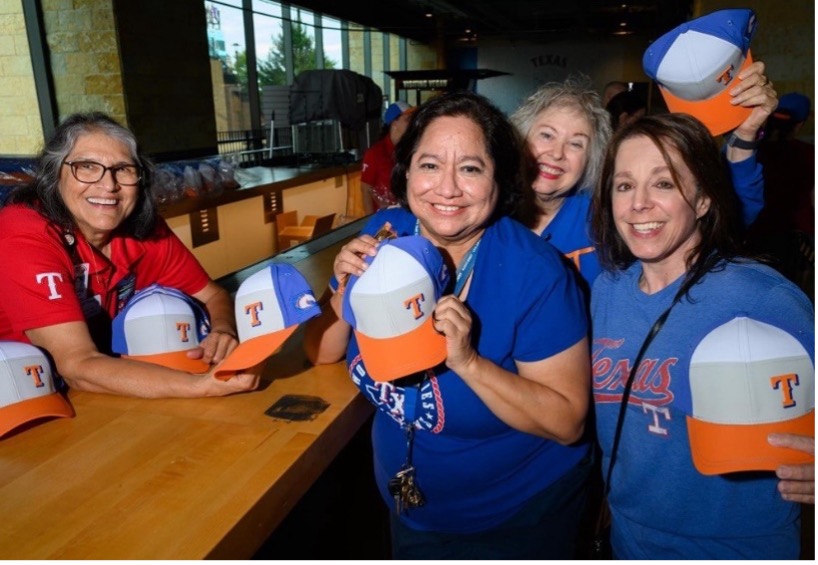
Yvette Rodriguez will celebrate 27 years at UTA in May! She started working at UTA on May 18, 1998, at the front desk for the Human Resources department and would sometimes receive calls which were not necessarily HR related. Prior to UTA, Yvette worked at the UT Health Science Center and at UT San Antonio. Her years of service began as with work study in 1981 at UTSA.
Yvette’s current role is serving as a benefits administrator in Talent, Culture & Engagement, which is HR’s current name. The most interesting part of Yvette’s job is that every day is different—who she speaks to and what issues she works on. Yvette takes pride in making a difference in people’s lives. That’s because Yvette helps us navigate the world of insurance and benefits whenever there is a life changing event. Whether it’s birth, death or retirement, these experiences are both happy and sad.
The most memorable person whom Yvette had the pleasure of advising was Allan Saxe, UTA’s beloved political science professor. Yvette met Allan and his wife for breakfast to discuss his retirement plans one weekend. The Saxes were late to the local breakfast spot to meet Yvette because their new car didn’t start. They ended up taking a taxi to breakfast and then asked Yvette for a ride home afterwards.
Did you know that Yvette is a political junkie? She loves watching TV analyses and presidential debates, as well as reading political cartoons. Yvette and her sisters have decided to agree to disagree about politics and keep the peace.
Living in the DFW metroplex, you are either a Cowboys fan or not. Yvette falls into the first category. She is a huge Cowboys fan, so naturally she would like to have lunch with Jerry Jones and Dak Prescott. Yvette is also a Rangers fan, as shown in the photo.
Yvette visits her family often in San Antonio where they reside. Yvette has a twin sister, Yvonne, who has twin daughters and a son. She is a proud aunt and is currently helping with the bridal shower for one of her nieces.
Like other interviewees before her, Yvette would like to tell her younger self to stop worrying so much about life because everything will work out. This is the case for her when she took the job at UTA many years ago which uprooted her from her family in the San Antonio area. Yvette feels she gets to experience the best of South and North Texas. Yvette hopes to continue working at UTA until retirement.
STARBUCKS BANANA WALNUT BREAD
By Starbucks Recipe Card
Ingredients
2 cups flour
1 teaspoon baking soda
1/4 teaspoon salt
1 egg
1-1/8 cups sugar
1/2 cup vegetable oil
2 tablespoons buttermilk
1/2 teaspoon vanilla extract
3 ripe medium-large bananas, mashed
1/2 cup chopped walnuts
1/3 cup chopped walnuts (in addition to 1/2 cup)
Directions
- Preheat oven to 325. Grease a 9x5x3 loaf pan and dust with flour.
- Blend the flour, baking soda, and salt; set aside.
- Mix the egg, sugar, and vegetable oil until combined.
- Add the flour mixture to the egg mixture and when blended, add the buttermilk, vanilla, and mashed bananas; mix well.
- Fold ½ cup of chopped walnuts and pour batter into prepared loaf pan.
- Top the batter with remaining 1/3 cup of walnuts.
- Bake for 45-60 minutes until a toothpick comes out clean.
2023-2024 SAC Executive Board
Executive Board Members
Chair – Christopher Templeton (6.5 years at UTA, 6 years in SAC)
Vice Chair – Shunda Dixon (7 years at UTA, 4 years in SAC)
Treasurer – Lauren McLain (11 years at UTA, 5 years in SAC)
Secretary – Elizabeth Coen (14 years at UTA, 3 years in SAC)
Parliamentarian – Carla Monk (16 years at UTA, 12 years in SAC)
Historian – Lisa Holt (8 years at UTA, 6 years in SAC)
Webmaster – Heather Earnhardt (12 years at UTA, 8 years in SAC)
Committee Chairs
Voting and Nominations – Garry Douthitt (11 years at UTA, 1 year in SAC)
Communications – Mistie Maskil (10 years at UTA, 2 years in SAC)
Special Events Chairs
Homecoming and Faculty / Staff Mixers – Nolan Brett (8 years at UTA, 1 year in SAC)
Staff Development – Joshua Finley (3 years at UTA, 3 years in SAC)
By-Laws – Quentin Scott (# years at UTA, 1 year in SAC)
Fall 2023
The ’23-’24 SAC Executive Board led the council with a full year of activities. Kicking off the year with the University’s Homecoming celebration, SAC participated in the annual Homecoming parade and collaborated with Faculty Senate in a joint venture for the Faculty & Staff Mixer. Folks from campus gathered in one of the MAC designated group exercising rooms to mingle and partake in food and drinks. This event was hosted by TCE and Provost Tamara Brown was the guest speaker for the event.
SAC’s involvement in the interview of finalists for the Vice President of Enrollment position is one of several interviews which SAC participates in to fill executive and leadership positions. These interviews provide an opportunity for SAC to ask the candidates of their positions on staff’s importance within the operation of the campus.

Winter 2024
In January, the inaugural Maverick Momentum Mentoring Program was launched, which is a collaboration between SAC and TCE’s Employee Engagement team. The 6-month program provides mentorship, knowledge sharing and professional growth for SAC mentees who are partnered with mentors across UTA. The next cohort of the Maverick Momentum Mentoring Program will begin in January 2025.
Spring 2024
Spring Break week in March is when Spirit Day occurs. Another Faculty & Staff Mixer was held in the morning in the UC foyer outside of Bluebonnet Ballroom. Jewel Washington delivered the speech this time. Colleagues from across campus networked over coffee and snacks. The festivities continued inside the Bluebonnet Ballroom with a vendor fair offering goods and services to staff. A Fuzzy Tacos box lunch was provided along with an umbrella door prize for the first 250 folks.
Summer 2024
Summer provided a break for staff to attend the second Staff Development Conference. Professional development opportunities include:
- Skill development
- Mentorship
- Networking
- Using AI in a professional setting
- Employee engagement
- Professional etiquette
- Emotional intelligence
- Maintaining professionalism
The all-day conference was held in the Bluebonnet Ballroom. Coffee breaks were provided between workshops along with a light breakfast and a catered lunch.
Provost Insights: Holiday Traditions and New Year Goals
Provost Insights: Holiday Traditions and New Year Goals
A SAC Interview with Provost Brown

To our staff: “Thank you for doing anything you do with excellence. I see you leaning in. I’m blessed to have the opportunity to work with amazing people here. It’s not like this everywhere. The honor is mine.”
In an interview for the SAC newsletter, Provost Tamara L. Brown talked about holiday traditions, goals for the new year, and the importance of the staff at UTA.
For our winter newsletter, I asked Dr. Brown about her holiday traditions. A long-standing tradition for her is to go home to Virginia for a week to spend time with family. Dr. Brown admitted that even though she enjoys visiting everyone, it is also stressful fitting everyone in, so after the flurry of visits, she has recently started to take a few days for herself, “to be refreshed for the start of the new semester.”
Another new tradition is a back-to-school get-together in January for all the faculty and staff who report to her. Last January was the first such gathering, and everyone enjoyed having the time to catch up and connect after the bustle of the holiday season. “It’s become a new tradition.”
No discussion of holiday traditions would be complete without discussing new year resolutions, so I asked Dr. Brown about her goals for the new year. She said in general her goals are “to do better, to be better,” and she recognizes that resolutions are hard to keep. Half-way through her third year at UTA, she is now settled enough to get more engaged with the community. This is one of her goals for the new year, in order to “open my eyes to ways to serve and connect the resources of this university to make a difference in the community, which is important to me.”
As we moved into talking about professional topics, I asked Dr. Brown about important career advice she had received in her past. While she didn’t have one specific mentor, there were people in her life who, in a timely manner, saw something in her and reached out to give advice. She talked about how getting such advice required a few things: first, you have to build relationships with people so that you can trust their feedback is helpful, not critical--that the person giving it cares about you enough to point out mistakes. Secondly, you have to be open to that feedback even when it’s hard to hear. “Build relationships and be in the right mind to receive [the feedback].”
We also talked about the role staff play in partnership with faculty, and how staff can support the 2030 initiative. “Without staff, the lights don’t come on. Nothing happens. What I love about our staff is that they are collaborative, eager to make a difference. [They] want the institution and the students to succeed . . . There’s a curiosity and a passion to how staff here engage . . . Anytime I’m interviewing for a position, the number one comment I here is that [we] have amazing staff.” Dr. Brown said that staff involvement in the 2030 strategic plan is “already baked in from the start. All of us are integral. Everyone has a role to play.”
Dr. Brown welcomes staff, students, and faculty to speak with her during her monthly open office hours: The next office hours will be held Thursday, January 16th, 9:30 – 11:00 am. Faculty, staff, and students can drop by UAB 321 or sign up via email at provost@uta.edu.
Quarterly Recipe
spicy ranch seasoned crackers
Ingredients

• 1 11 oz box mini saltine crackers
• 1/2 cup oil
• 1 packet of Hidden Valley Spicy Ranch Seasoning Mix
• 1/2 tablespoons dried parsley
• 1/2 tablespoons red pepper flakes
Method
- Add the ranch seasoning mix, parsley, and red pepper flakes to the oil and stir until blended.
- In a large bowl, pour the mixture over the crackers and stir to coat evenly.
- Spread the crackers evenly on a large sheet pan.
- Bake at 250 degrees for 20 minutes and cool before serving.
Years of Service
Nature and Nurture Influences

Charlie Templeton is celebrating his 35th year at UTA. He started on January 19, 1990, with the Physical Plant, which is what the Wetsel building and the Facilities department were known back then. His master's degrees in social work and educational technology studies had to be put on hold after experiencing some family and financial difficulties. So, Charlie came to work at UTA for the stability of a paycheck. He showed up for the interview in a suit and tie, and everyone thought that he was an official there for state business. Because of his janitorial cleaning service business, Charlie was hired as the Day Supervisor of Housekeeping. This job was created for him since the position hadn’t existed before and Charlie had previous experience as an owner of a cleaning company. And with his radio-television degree and technology background, Charlie produced hazard communication and instructional training videos during the 23 months he was with the Physical Plant department.
After working for the Physical Plant, Charlie went on to work at Bits and Bytes which was a computer store on campus. He started in Sales and was promoted to Assistant Manager in 6 months. Charlie worked here until the store closed, after which he moved over to Desktop Support in the Office of Information because of his experience with MACs and PCs. His title is now Lead System Configuration Analyst. What Charlie enjoys about his job is that he takes technology and makes it usable and understandable for the users. He and his colleagues work to keep computer systems up-to-date, configure new computers to UTA format, and reconfigure old systems to the current specs.
Charlie’s Christian faith sustained him during the financial crisis of the early 1980s and helped his family through medical struggles. So, having lunch with the biblical Daniel, who was thrown in the lion’s den, and John the Apostle would be an ideal meal because he shares their strong faith in God. A fourth person at the table would have to be Sam Houston, who was the governor of two states – Tennessee and Texas, along with being the first and third president of the Republic of Texas. Sam Houston was also an advocate for the Cherokee Indians, whom he lived with twice in his life. These life experiences shaped his development as a statesman.
Being married to your high school sweetheart after being apart for 49 years is a milestone that many people don’t get to experience. Charlie Templeton is fortunate to have experienced this. He has two sons, a stepdaughter, and three grandchildren. His eldest son, who struggled with health issues early in his life now works as an engineer at General Dynamics. His other son is Christopher Templeton, who also works here at UTA and is the Chair of the Staff Advisory Council (SAC). He also has a stepdaughter, who works as a municipal water quality specialist. If there’s one thing that Charlie would tell his younger self, it is that “fear of failure is not a character flaw because courage is action in the face of fear, and we are better defined by our reactions to setbacks and failures than our successes.” This is evident in Charlie’s continuing on when he was faced with adversities.
Although Charlie’s background is in cleaning services and computers, his true passion is being a TV broadcaster for news and sports. He graduated from the University of Houston in 1977 with a degree in radio-television. He graduated from Permian Odessa High School in Odessa, Texas, where Friday Night Lights originated. He was there for the first year of the rallying cry MOJO. The book and movie feature the school’s 1988 football team’s striving for the state championship. MOJO football is supreme there as the Permian Panthers are 6-times state champions. Is there anything better than football in Texas on an autumn Friday night?
Summer Survey
Summer Time Cool Down Survey Results

by Mistie Maskil
- What is your favorite summer drink?
- peach iced tea
- Sonic sweet tea with strawberry, blackberry, and extra cherries.
- Sparking mineral water
- Cucumber Mint Lemonade
- What is your favorite ice cream?
- mint chocolate chip
- Bluebell Cookies and Cream
- Homemade plant-based strawberry and mango, sweetened with blue agave and honey
- Pistachio
- Would you rather swim in a …
- Pool
- What’s the best thing about summer?
- Vacation and Travel
quarterly recipe - Cinnamon apple bread
by Lori Danyl Carter
Ingredients:

- 1-1/2 cups all-purpose flour
- 1-1/2 teaspoons baking powder
- 1/2 teaspoon salt
- 1/2 cup unsalted butter, softened (1 stick)
- 1/2 cup granulated sugar
- 2 teaspoons vanilla extract
- 2 large eggs
- 1/2 cup milk
Apple Mixture:
- 1/2 cup light brown sugar packed
- 1-1/2 teaspoons ground cinnamon
- 1 large apple peeled, cored, and chopped into small pieces
Topping:
- 2 tablespoons brown sugar
- 1/4 teaspoon ground cinnamon
Glaze:
- 3/4 cups confectioners’ sugar
- 1/4 teaspoon ground cinnamon
- 2 tablespoons water
Directions:
- Preheat the oven to 350 degrees Fahrenheit. Grease and flour an 8.5 x 4.5 inch loaf pan.
- In a medium mixing bowl, whisk together the flour, baking powder and salt. Set aside.
- Using an electric handheld or stand mixer fitted with the paddle attachment, beat the butter, sugar and vanilla together, on medium-high speed until smooth and pale (about 3-4 minutes). Scrape down the sides and the bottom of the bowl with a rubber spatula as needed.
- Beat in the eggs, one at a time, until incorporated.
- With the mixer on low speed, add about half of the flour mixture, alternating with half the milk. Add the remaining flour mixture and milk and mix to combine.
- In a mixing bowl, combine the brown sugar, ground cinnamon and apples. Set aside.
- To make the topping, in a small bowl combine the brown sugar and cinnamon. Set aside
- Pour half of the batter into the prepared loaf pan and top it with half of the apple mixture. With a knife or skewer, swirl through the batter lightly. Don’t overdo it. The bread looks better with a beautiful thick layer of fruit and cinnamon sugar in the middle.
- Pour the remaining batter on top and then the remaining apple mixture. With a knife or skewer, swirl through the batter a couple of times in both directions. Sprinkle the cinnamon sugar mixture on top.
- Bake for 45 to 55 minutes or until a cake tester or toothpick inserted into the center comes out clean. Due to the soft apples in the center, only a few moist crumbs should be attached to the cake tester or toothpick.
- Remove the bread from the oven and allow it to cool in the pan for about 15 – 20 minutes. While the bread is cooling, whisk together the glaze ingredients. Remove the bread from the pan and place it on a cooling rack. Drizzle the glaze over the bread. Let the bread cool completely before slicing.
Years of Service
Years of Service - Social Justice
by Lauren McLain
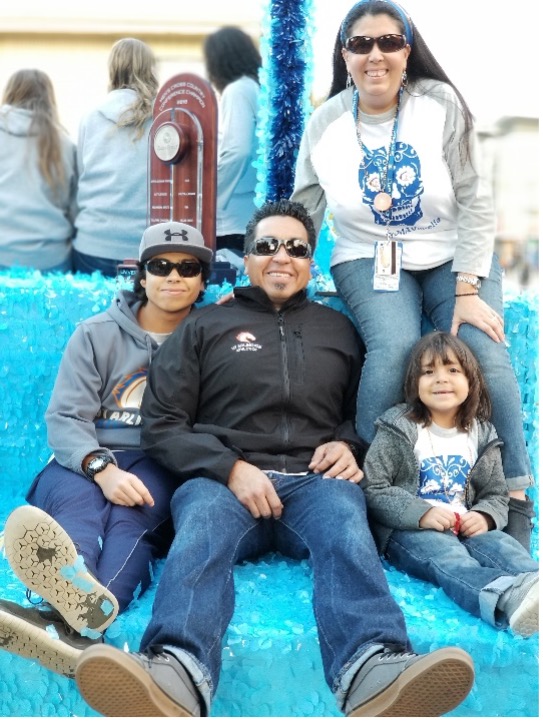 Debbie Garcia started her tenure at UTA in 1992 as a student-athlete and has never left. She was recruited to be on the Track team and was on course for pre-Law. Debbie was passionate about Political Science and History, British history to be exact. After graduation, Debbie worked for UTA fulltime as the Academic Advisor/Life Skills Coordinator and was responsible for academic advising and programs that engaged student-athletes with campus. Fast forward 20+ years and in her current role as Deputy Athletics Director, she advocates for student-athletes just like she has from day one. She taps into her student-athlete experience to help students and families navigate the balance of collegiate sports and higher education while dreaming about professional sports. Debbie helps them understand the value of their college education, particularly after the glory days fade.
Debbie Garcia started her tenure at UTA in 1992 as a student-athlete and has never left. She was recruited to be on the Track team and was on course for pre-Law. Debbie was passionate about Political Science and History, British history to be exact. After graduation, Debbie worked for UTA fulltime as the Academic Advisor/Life Skills Coordinator and was responsible for academic advising and programs that engaged student-athletes with campus. Fast forward 20+ years and in her current role as Deputy Athletics Director, she advocates for student-athletes just like she has from day one. She taps into her student-athlete experience to help students and families navigate the balance of collegiate sports and higher education while dreaming about professional sports. Debbie helps them understand the value of their college education, particularly after the glory days fade.
How did Debbie go from pre-Law to being a student-athlete advocate? Well, a retired History professor and Dean of the College of Liberal Arts, Elisabeth Cawthon played a pivotal part. Not only was Professor Cawthon a mentor to Debbie during college but also in life. Debbie remembers fondly how Professor Cawthon would dress in period costume as role playing for her lectures. She wanted to make sure that history is never boring. How many of us wish that we had a professor make old subject matters more interesting and memorable?
It is no surprise to hear who Debbie would like to have lunch with. It would be with former Governor Ann Richards and Cesar Chavez, both are advocates in their own rights. Ann Richards was one of only two female governors for the state of Texas. Her famous line was “After all, Ginger Rogers did everything that Fred Astaire did. She just did it backwards and in high heels.” As for Cesar Chavez, Debbie admired his civil rights activism for farm laborers which started in California and spread nationwide. Chavez leveraged for better working conditions through nonviolent tactics such as strikes, boycotts and fasts. What Debbie learned is that every person is valuable, and their unique contributions should be recognized. With such social activism idols, Debbie works to ensure that all student-athletes and their contributions are supported. A recent victory for a very successful program that does not usually get as much attention as other sports was the addition of a scoreboard at the UTA Tennis Center. The basketball and volleyball teams are housed in the beautiful College Park Center, the track and golf teams have facilities at the stadium and the baseball and softball fields and clubhouses are among the best mid-major spaces in the country. The tennis team was due a technology upgrade and an improvement reflective of their success.
Debbie has lived in two places her whole life – El Paso was where she grew up and Arlington where she studied and lives with her husband, Mike, and two boys. As a matter of fact, Mike also works at UTA, so Debbie’s world is this university. She’s fortunate to be able to raise her sons around higher education and her beloved Maverick student-athletes. Debbie’s retirement plan is to be a party planner and make mums. You know, those humongous homecoming mums that highlight high school football season. And now they’re also worn in middle schools. So, there are plenty of mums to make. I was very surprised to hear about the mums because that is also my retirement plan! Some things that Debbie would say to her younger self are to breathe and exhale; be in the moment; and give yourself more credit. This goes back to her belief that everyone is indeed valuable, including yourself!
Pondering AI at UTA 2024-25 Discussion Series
-By Ashleigh Johnson, University Analytics
The AI landscape is bewildering and changing fast. Positive and negative hype, hyperbole, or hysteria (depending on your point of view) is omnipresent. To help us navigate this, we are thrilled to announce that Kimberly Nevala, renowned strategic advisor, thought leader, and host of the popular ‘Pondering AI’ podcast, will continue collaborating with UTA University Analytics on a monthly conversation series with our faculty for the second year. This monthly discussion series brings internationally recognized keynote speakers and authors to UTA, arming attendees with pragmatic perspectives on understanding AI and embracing its current and emerging complexity. This series is designed for a broad audience and doesn't delve deeply into the technical intricacies of AI. All individuals, irrespective of their technical background and if they are curious about the potential ramifications of AI.
If you would like to mark your calendars as a “save the date,” the sessions are listed below.
10/10/24 12-1PM Trinity Hall 2nd Floor Room 205
11/7/24 12-1PM Trinity Hall 2nd Floor Room 205
12/12/24 12-1PM Trinity Hall 2nd Floor Room 205
If you would like to sign up for the Pondering AI distribution list to receive updated information and calendar invites, you may do so by following the QR code, or visiting Pondering AI Electronic mailing list (uta.edu)
The success of the Maverick Momentum Program Elevates Staff to New Heights
By: Sara Pezzoni
A cohort of ten pairs of mentors and mentees recently celebrated the conclusion of the Maverick Momentum’s pilot program offered by the The Office of Talent, Culture, and Engagement’s (TCE) Belonging & Engagement division. The six-month mentorship program, which took place from January-June 2024, was deemed rewarding and valuable by participants in that it provided a lasting foundation for professional growth and helped participants develop and strengthen a sense of agency over their career.
Staff Advisory Council representative Margie Jackymack and Loretta Pequeño of TCE first saw the need for a staff-centered mentorship program in 2022 with a small group of four pairs of mentors and mentees. Prior to introducing this program, Jackymack said the need came from staff looking to progress in their roles who were without the structure and tools needed to elevate their careers at UTA. A year later, the program was revamped and expanded by TCE to become the Maverick Momentum program.
The key to Maverick Momentum’s success lies within the meticulous planning from its coordinator that goes into the pairing of each mentor with their mentee. “The thought and care that went into selecting my mentor was truly phenomenal,” said Quentin Scott, mentee, “Finding the right mentors and mentees to pair with them is ultimately what decides the success or failure of a program [like this].”
Scott’s mentor, Sarah McBride, said the program was mutually beneficial for both mentees and mentors. “The sessions were helpful for me as I reflected on my experience, and I saw from my mentee that they were learning and looking at things from new and different angles the more we met,” said McBride. “I have a growth-mindset and am always wanting to learn and develop, and this was a great opportunity to do that, while also supporting a fellow Maverick with their own development.”
Former Maverick Momentum program coordinator Veronique Jones commended the level of professionalism, intentionality, and investment that program participants displayed. “UTA should be proud of the fact that staff are not merely willing and open to development, but they take personal responsibility for their development,” Jones said. “Staff make sacrifices and invest their energy, effort, and time because they want to be better...they are genuinely invested in the institution and want UTA to become better as well.”
This program will continue to serve as an opportunity to embrace the culture of perpetual learning and continual professional development, according to the program's current coordinator, Kathy Murphy. Jones is hopeful that the program will expand its impact to “become a premiere program for staff to feel seen, develop skills, maximize connections, build long-lasting relationships, and continue to learn the true ethos of what it means to be a Maverick.”
Murphy says there will be a few new tools added for the future cohorts, which includes the utilization of the DiSC assessment as a tool for building relationships and self-awareness in the workplace, and a new website that will have additional resources for program participants. “This is such a great time to be at UTA for staff. There is an air of positivity around ‘what I do matters here’ and this program really works toward making you better while bettering the university,’” Murphy said.
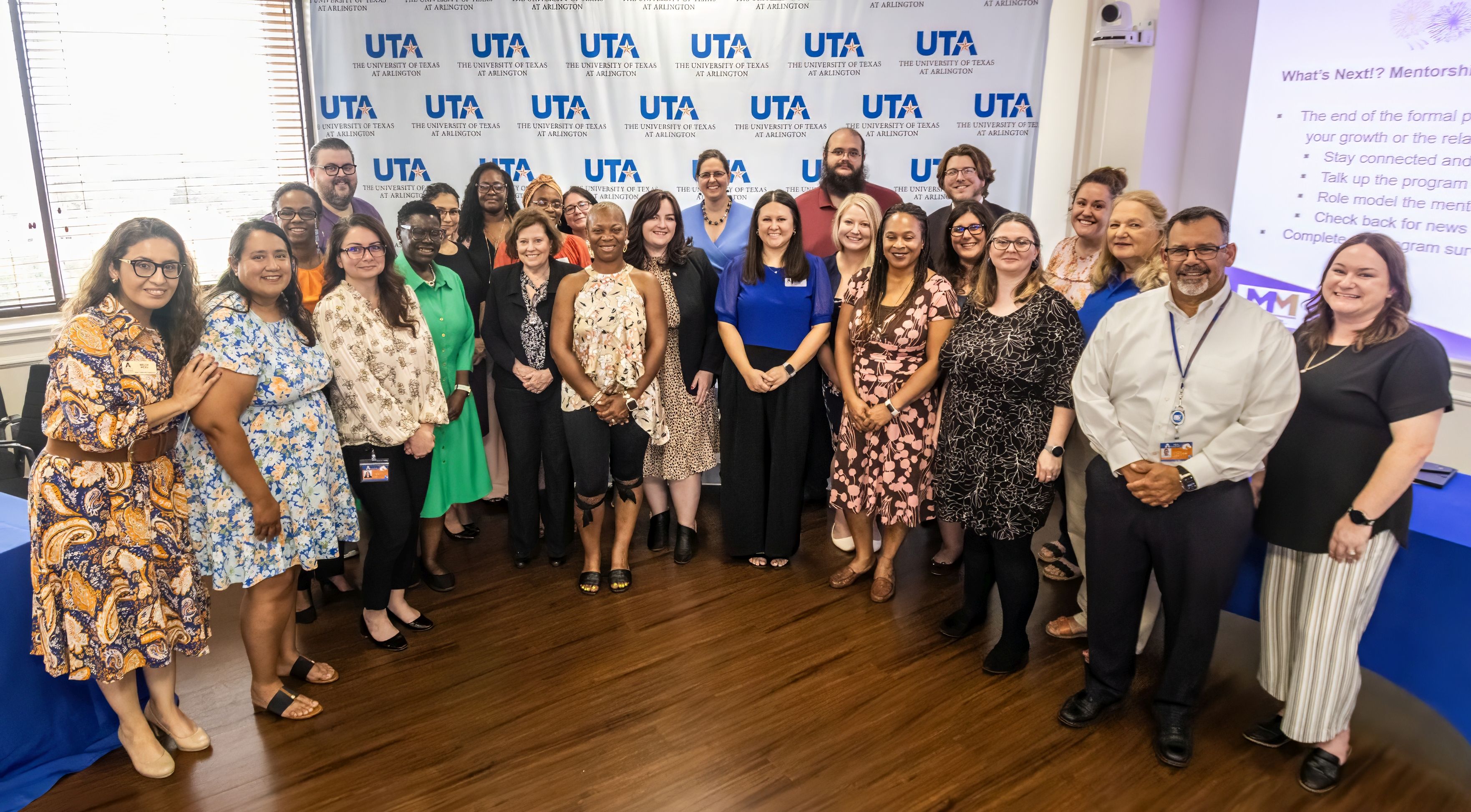
Group of Maverick Momentum mentors and mentees attending a reception held in their honor on June 20, 2024 at the conclusion of the program’s pilot. Photo by Matt Hellman
For those interested in participating in the Maverick Momentum program, applications will be open again in Fall 2025 to those who have participated in one of SAC’s many events. For more information on how to attend one of SAC’s events please visit the SAC Meetings & Events page or email sac@uta.edu. For more information on the Maverick Momentum program, contact Kathy Murphy at kathy.murphy@uta.edu or visit the Maverick Momentum program website.
Domestic Travel Survey
By Mistie Maskil
The results of the domestic travel survey show that we have a good number of people who have traveled all over the US.
Region 1: Northeast Division 1: New England
Connecticut - 1
Maine - 1
Massachusettes - 6
New Hampshire - 1
Rhode Island - 2
Vermont - 1
Region 1: Northeast Division 2: Mid-Atlantic
New Jersey - 6
New York - 7
Pennsylvania - 7
Region 2: Midwest Division 3: East North Central
Indiana - 4
Illinois - 7
Michigan - 5
Ohio - 6
Wisconsin - 4
Region 2: Midwest Division 4: West North Central
Iowa - 2
Kansas - 7
Minnesota - 4
Missouri - 9
Nebraska - 4
North Dakota - 1
South Dakota - 3
Region 3: South Division 5: South Atlantic
Delaware - 3
District of Columbia (D.C.) - 8
Florida - 13
Georgia - 8
Maryland - 7
North Carolina - 7
South Carolina - 7
Virginia - 8
West Virginia - 5
Region 3: South Division 6: East South Central
Alabama - 7
Kentucky - 8
Mississippi - 9
Tennessee - 10
Region 3: South Division 7: West South Central
Arkansas - 9
Louisiana - 9
Oklahoma - 12
Texas - 12
Region 4: West Division 8: Mountain
Arizona - 10
Colorado - 12
Idaho - 2
New Mexico - 10
Montana - 1
Utah - 3
Nevada - 8
Wyoming - 2
Region 4: West Division 9: Pacific
Alaska - 0
California - 11
Hawaii - 6
Oregon - 3
Washington - 6
Inhabited Territories of the United States
American Samoa (Pacific) - 0
Guam (Pacific) - 1
Northern Mariana Islands (Pacific) - 0
Puerto Rico (Caribbean) - 0
United States Virgin Islands (Caribbean) - 1
Travel Tips
Some travel tips and advice from our community:
- Cheaper to travel outside of the United States.
- Always carry paper copies of travel docs! Phones often die, break and get left behind in Ubers!
- Pack light and always carry on an clothing change and medicine.
Years of Service - July 2024
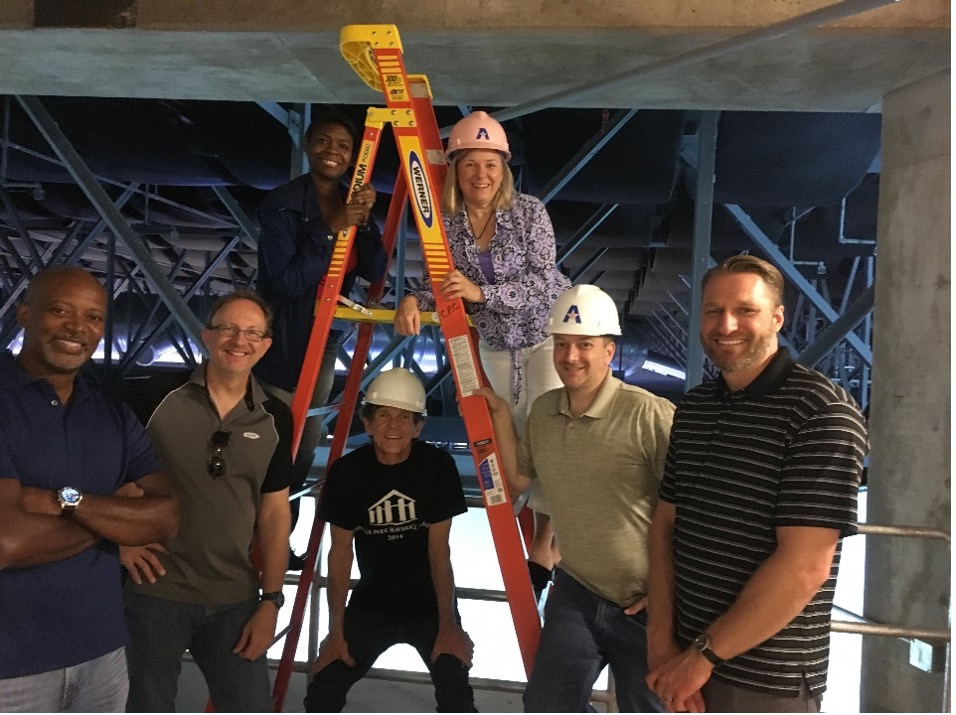
Like Mother, Like Daughter
by Lauren Bradfield
Sharon Carey has been with UTA since 1990 and has served in various capacities on campus. You can say that she is very versatile and always open to new opportunities. Sharon started as the Assistant Director for Recreational Sports and her office was in the Activities Building, which is now the MAC. She was with Student Affairs for 17 years before moving over to the Special Event Facilities (SEF) department, which included the College Park Center, Texas Hall, Maverick Stadium and UTA Tickets. After a brief retirement, Sharon came back to UTA and is now in the Office of Facilities Management overseeing the Housing Maintenance and Campus Custodial departments. Sharon’s time in the SEF department demanded many nights and weekends due to events held but that is no longer the case since she’s found Work-Life balance in her current role in Facilities.
Having been here at UTA for over 30 years, Sharon has worked with many folks. Her most memorable interaction was with past president Jim Spaniolo when while working on the College Park Center (CPC) construction. President Spaniolo tasked the team with moving up the completion date in order to host the first basketball game for that season. Talk about carrying a heavy weight on your shoulders! Not only was the construction a couple of months out of nearing completed but now they must speed up the process even faster. The CPC did open in time for that basketball game through the efforts of the CPC team. Another person who is memorable to Sharon is John Hall, VP of Administration and Economic Development. He has played a pivotal role in her professional career by serving as her mentor and role model during their 10+ years of direct work together.
Sharon wants people to know that she is an “open book”. Just ask her anything and she’ll give you an answer. Sometimes you may not like it, but she’ll tell you like it is. She also wants you to know that her proudest moments are spent with her family, and that she loves being a mother. She enjoys being there for her husband, daughter and stepson as they bring her great pleasure. Sharon has been married to Tim for 24 years and they will soon be grandparents. When asked who she would like to have lunch with, Sharon replied that it would be with her late mother who was an amazing woman with a strong value for education and social service. She was able to raise six strong daughters who contribute to society.
Being an open book does not necessarily make you an extrovert, at least not in a group setting like at conferences. Sharon does not like making small talk with strangers, but you wouldn’t know this because of her can-do personality. And it is ironic that Sharon obtained her first job out of college at a National Intramural Recreational Sports Association (NIRSA) conference where she met Jim Garrett and landed an interview with UTA. And the rest is history. If there’s one thing that Sharon would tell her younger self, it would be self-awareness. It has given Sharon a better understand of the people around her, which in turns create stronger relationships with them. Just be mindful how your actions may affect others.
Quarterly Recipe
Fourth of July firecracker hot dogs
by Lori Danyl Carter
Ingredients:
-
 1 can refrigerated breadstick dough
1 can refrigerated breadstick dough - 16 hot dogs
- 16 thick slices colby cheese
- 16 skewers
Special Equipment:
- Star cookie cutter
- Wooden skewers
Directions:
- Preheat the oven to 350ºF and line a baking sheet with parchment paper.
Set aside. - Take a skewer and stick it all the way through the center of the hot dog length-wise, leaving about an inch and a half exposed out of the top of each hot dog.
- Take a piece of breadstick dough and wrap it around the hot dog in a spiral shape until you reach the top, leaving gaps in between each spiral. Repeat with the rest of the hot dogs and lay them on the baking sheet.
- Bake hot dogs for about 20 minutes, or until the breadsticks are golden brown.
- While the hot dogs are baking, use a star cookie cutter to cut out stars approximately an inch in diameter. Let the hot dogs cool and then place 1 cheese star at the top of each hot dog in the part of the skewer that's sticking out of the top.
- Display the hot dogs using a styrofoam ball so they can stick straight up like firecrackers. Serve with all your favorites.
HAPPY FOURTH OF JULY!
UTA Special Collections: A Premier Research Destination
By: Sara Pezzoni
Where can you find an original copy of the Texas Declaration of Independence, Peter Apian's Cosmographia published in 1534, an Arlington State College football letterman jacket, or photos of John F. Kennedy’s visit to Dallas on November 22, 1963 all in one place? You'll find your answer by venturing to the sixth floor of UTA’s Central Library to a premier research destination of campus—UTA Special Collections.
The Society of American Archivists’ Dictionary describes “special collections” as “an administrative unit of a library responsible for managing materials outside the general library collection, including rare books, archives, manuscripts, maps, oral history interviews, and ephemera.” UTA Special Collections excels beyond this definition in that it provides comprehensive access to its historic materials for research/community use and promotes transformative learning experiences. At its core, the department is committed to open, collaborative partnerships with staff, faculty, and beyond to share its materials with as many people as possible.
UTA Special Collections has served campus and its surrounding community for nearly six decades, and it continues to be actively involved in campus programming. It prides itself in its outreach efforts and is available to present and/or display items at events on and off campus. It hosts dozens of classes for research each semester and staff actively post to its blog, the Compass Rose, and its social media outlets on Instagram, Facebook, and Twitter/X with news updates.
Special Collections began operation within UTA Libraries in 1967 with the establishment of the Texas Labor Archives. The university has undergone many changes since then, to include one name change, seven presidential transitions, and an increase in average annual enrollment of roughly 30,000 students. Whether you are hosting an event focusing on the history of your department, advising students with research needs, or looking to refresh your office décor with historic photos of campus, UTA Special Collections has something for you!
Within Special Collections is the Virginia Garrett Cartographic History Library, established in 1978, which comprises thousands of maps and atlases (dating from 1493 to the present) relating to Texas, Mexico, the Gulf Coast, Africa, and even Antarctica. Special Collections’ robust photographic collections form a rich visual history of the DFW metroplex, with its largest and perhaps most well-known photo collection being the “photographic morgue” of the Fort Worth Star-Telegram newspaper. The collection includes an estimated 400,000 print photographs and over six million negatives, dating from about 1849-2003. Texas history is broadly covered throughout its collecting areas, to include disability history, political history, labor history, and the U.S. War with Mexico.
Additionally, the university’s origins and history of its evolution is preserved in the University Archives, which encompasses records reflecting the achievements of its officers, faculty, staff, students, and alumni. Special Collections also holds the answers to many questions embedded in university lore, including: why is there a cemetery on UTA grounds? What happened to the bar in the basement of University Center? Why was an elephant once buried on campus?
Special Collections aims to “collect, arrange, preserve, and make available materials that have research value in a variety of different fields.” With this diverse range in the types of materials within its holdings, Special Collections emphasizes many different ways to access and explore its collections. The Library Catalog allows users to search for books, maps, journals, microfilm, newspapers, and archival collections within its holdings. Finding aids are available as a guide to each archival collection and can be searched through ArchivesSpace. Nearly 125,000 items have been digitized from collections and made available through the UTA Libraries Digital Gallery. The Digital Archive provides access to collections that are “born-digital” for materials that only exist digitally. There are a number of curated digital collections and digital exhibits that can be explored through the UTA Libraries’ website. There is also a series of blog posts available to help guide your search through these online resources. Whether you have a specific research topic in mind or want to peruse the space and view the latest exhibit, Special Collections staff are eager to assist and answer questions.
UTA Special Collections fosters lifelong learning and encourages exploration of its collections. It is open to the public Tuesday-Saturday, 9AM-5PM. If you’re interested in having Special Collections join your next event, please reach out via email at spcoref@uta.edu.
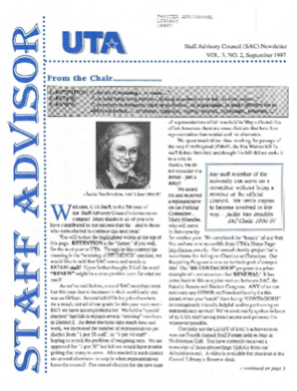
Copy of the “Staff Advisor,” the Staff Advisory Council (SAC) Newsletter, Vol. 3, No. 2, September 1997, located within the UTA Staff Advisory Council Records (Unproc. 2009-122).
Staff Development Conference
A Look into the Staff Development Conference: A Conversation with La’Kisha Fredericks
by Mistie Maskil
The Staff Development Conference, an annual event at the University of Texas at Arlington (UTA), is more than just a gathering. It’s a platform for staff members to connect, learn, and grow.
The Staff Development Conference Committee, led by Joshua Finely, worked tirelessly to ensure the event was beneficial for all staff members. The team comprised individuals from various departments, each bringing unique experiences and ideas to the table. The main focus was to identify topics that would be resourceful and useful for the diverse staff at UTA. Artificial Intelligence (AI) was a unanimous choice, given its increasing relevance in today’s world.
The conference also aimed to utilize the wealth of knowledge within UTA. The idea was to help staff benefit from the resources around them, fostering a culture of continuous learning and improvement. The committee also considered the timing and location of the event to ensure maximum participation.
I had a conversation with La’Kisha Fredericks, a member of the Staff Development Committee and she explained that the conference was not just about learning; it was about connecting. In an age where most work is done remotely; the conference provided an opportunity for staff to meet and network. It was a chance to put faces to names and build stronger relationships.
The success of this year’s conference has set a high bar for the future. Fredericks states, that the goal for next year is not just to meet the same expectations but to exceed them. The committee plans to incorporate more intentional networking time and provide opportunities for staff to voice their opinions and suggestions.
The Staff Development Conference is a testament to UTA’s commitment to its staff’s growth and development. It’s an opportunity to learn, connect, and contribute to the university’s continuous improvement. Whether you’re a seasoned manager or a new staff member, there’s something to gain for everyone.
Work-Study Experience
Work-Study Experience
by Lauren McLain
Patrick Estes is a senior in the Architectural Engineering program. His field of study is about the design of building systems – mechanical, plumbing, and structural. Patrick has been working in the Office of Facilities Management since June 2022 and works under the direct supervision of Robb Chock, Director of Mechanical Operations.
In Patrick’s role, he mainly focuses on energy efficiency in a building. He uses Excel to keep track of the HVAC equipment and the weather since outside temperatures affects their operation. After Robb assesses that a building’s system is performing inefficiently or is no longer code compliant, then Patrick uses AutoCAD to document the updated system design. Now and then, Patrick also changes air filters for the mechanical units. With onsite visits to buildings on campus and hands on experience at various mechanical and plumbing systems, Patrick has a better understanding of his textbook material. And the textbook information has also helped him understand better what he is looking at in the field. Patrick is learning that a building must be maintained within a budget, something which he has not even considered until now. Patrick attends project meetings as well as meetings with mechanical contractors. So, he is getting a wide range of exposure to real life experiences, and these will help prepare him for the workforce after graduation.
Patrick feels very fortunate to have found a job within his degree and to be treated as a colleague, rather than as a student. The work-study program is capped at 19 hours per week, but he normally puts in 15 hours. His work schedule does not impact his studies as he works around his classes, and his cross country and track activities are also not affected. We in the Facilities department are also very fortunate to have Patrick working with us as he is passionate about his tasks and enjoys learning while doing them. One of his fond memories is when he first started work and was taken down to a utility tunnel to identify signage for safety and exits. This tunnel is a 2-mile loop under the campus and has 3 passages under Cooper Street. If you see Patrick around campus, say “hi” to him. And if you have any questions about the work-study program, then he would love to tell you more about his experience.
Strategic Planning Insights: A Conversation with Nicholas Viator
by Mistie Maskill
Within the realm of institutional development, lies a roadmap for the future. This roadmap is meticulously crafted through strategic planning.
The recent release of the UTAs 2030 Strategic Plan is an important milestone for the university. It captures and showcases how the university will move forward the projects/progress that has been in the works for some time. Nicholas “Nick” Viator, Assistant Vice President of Strategic Planning at UT Arlington, graciously shared insights into the intricate process of crafting strategic pathways at the University of Texas at Arlington (UTA).
What is Strategic Planning?
At its core, strategic planning entails setting the mission, vision, and goals that steer an institution towards its desired outcomes, alongside identifying the necessary qualities to support these aspirations.
The UTA Strategic Plan wasn't solitary, and it unfolded through various stages, from conducting listening sessions and surveys to facilitating focus groups and interviews - comprising individuals from various levels and departments. Nick affirms the significance of gathering diverse perspectives, and that all voices provide the foundation needed to begin building the plan that fits UTA. These different areas of research facilitated data presentations and brainstorming sessions to shape institutional priorities and inform strategic decisions. UTA’s Strategic Plan involved a collaborative effort and is a key highlight in Nick’s approach.
Nick goes on to share about how the role of mentorship and collaboration influenced him during this development. Drawing from experiences at previous institutions like University of Texas Medical Branch (UTMB), where mentorship and a nurturing culture formed the bedrock of success. Nick strives to integrate similar principles at UTA and acknowledges the significance of cultivating a supportive environment where ideas flourish, and individuals thrive.
As UTA navigates this transformative phase, Nick leans heavily into fostering open communication and engaging with the community. Initiatives like the Rise 100 project reflect the institution's commitment to elevating research endeavors, with similar endeavors in development for staff.
Looking ahead, Nick envisions a campus-wide engagement drive, with surveys slated to gather feedback and insights from the UTA community. His passion for facilitating growth and his steadfast commitment to fostering culture and meaningful connections will ensure the way for a brighter tomorrow. Going beyond the intricacies of strategic planning lies a profound appreciation for the success of UTA.
As the strategic plan continues to take shape it stands as a cornerstone for shaping the future of UTA. Nick advocates for active participation, urging staff to contribute their perspectives to ensure inclusivity and alignment.
Nothing Bundt Cakes Copycat Recipe for
White Chocolate Raspberry Cake
by Lori Danyl Carter
This Nothing Bundt Cakes White Chocolate Raspberry Cake Copycat tastes just like the popular bakery version! Creamy, flavorful, easy to make at home!

Prep Time: 10 min. | Cook Time: 45 min. | Total Time: 55 min. | Serves: 16
Ingredients in White Chocolate Raspberry Bundt Cake:
- For the dry ingredients, save yourself some time and use a box of white cake mix.
- To the dry cake batter, add a package of instant white chocolate pudding mix (dry)
- In a large mixing bowl, add a cup of sour cream – adds so much moisture to the cake
- Eggs – you’ll need four large eggs to add at medium speed.
- Water – if you want to make an even richer cake, you can substitute the water for buttermilk or whole milk
- Vegetable oil
- White chocolate chips, chopped into smaller pieces. You can even use a food processor to chop them up.
- Raspberry pie filling
- For the frosting: you’ll need softened butter, softened cream cheese, powdered sugar, and a couple teaspoons vanilla extract. Use a paddle attachment on a stand mixer, whip the frosting until light and fluffy
Ingredients:
1 box white cake mix (15.25 ounces)
3.4 ounces instant white chocolate pudding mix (dry)
1 cup sour cream
4 large eggs
1/4 cup water
1/2 cup oil
1 cup white chocolate chips chopped into smaller pieces
1/2 cup red raspberry preserves (SEE NOTES ABOVE)
16 ounces cream cheese softened
1/2 cup butter softened
3-4 cup powdered sugar
2 teaspoons vanilla
Instructions:
- Spray a non-stick formed aluminum bundt pan with cooking spray (see above) and lightly flour the edges. Preheat your oven to 350-degrees. Gather your ingredients.
- Mix first six ingredients together with a beater. Fold in white chocolate chips.
- Fill prepared bundt pan with half of the batter.
- Spoon half of the raspberry preserves in 5-6 small, separated teaspoon-sized spoonfuls over the batter (so it looks like separate tiny clumps of filling over the top).
- Using a knife swirl the filling through the cake. Pour remaining batter in evenly and spoon in remaining pie filling, repeating the "swirling" process above.
- Cook in oven at 350 degrees for 45-50 mins. (do the “knife test” to determine doneness). If the knife does not come out clean, keep placing back in the oven for 3-5 min at a time until it does.
- Remove from oven. Let cool for 10 mins. Remove from pan. I think it tastes most like a Nothing Bundt Cake if you put it on a serving plate, wrap it well in Saran Wrap, and let it sit overnight in the freezer before frosting and serving.
- In a medium bowl, cream together the cream cheese and butter until creamy. Mix in the vanilla, then gradually stir in the powdered sugar (start with 2 cups then keep adding more until it is nice and thick).
Note: To get the frosting like in the picture. Fill a gallon size Ziplock bag with the frosting and chill for about 30 minutes. Cut off a bottom corner at about a half inch diagonal cut, depending on how big you want the "frosting strips". Frost cake by squeezing out the frosting from the outside of the cake toward the middle.
Serve and enjoy!
Suggestions for White Chocolate Raspberry Cake:
- When making a bundt cake, you want to be sure to generously grease AND flour or spray the cake pan with non-stick cooking spray, making sure to get every little nook and cranny.
- Before the cake is completely cool, carefully run a knife between the cake and the pan. Turn the plate or platter you will be serving the cake on upside down and place it on top of the cake (still in the bundt pan). Holding the plate and bundt pan together, flip so the plate is now on the bottom and the bundt pan on top. This will hold the cake in the bundt pan. Once upside down, tap the handle of a butter knife along the bottom of the bundt pan (that is now flipped to be on top). The cake should come out very easily onto the plate.
- To get the frosting like in the picture, fill a gallon size Ziplock bag, or a pastry bag, with the frosting and chill for about 30 minutes. Cut off a bottom corner at about a half inch diagonal cut, depending on how big you want the “frosting strips”. Frost cake by squeezing out the frosting from the outside of the cake toward the middle.
- If you can’t find white chocolate pudding mix, vanilla is a good substitute.
New Year’s Resolution Survey Results
By Mistie Maskil
60% no they do not believe in New Year Resolutions whiles 40% said yes.

16% stated yes, they do complete their resolutions, 17% said no, and 67% said they sometimes complete them.

We had a handful of survey participants share some of their resolutions, here are a few of them:

- I believe in having goals. That doesn't mean I always hit them. But I keep striving!
- While I don't believe in New Year's resolutions, I do use January to review the previous year and look for ways to be ready physically and spiritually for the upcoming year.
- Live a healthier lifestyle!
When Life Throws You a Curve Ball

by Lauren McLain
Elsa Corral is the gate keeper to the president’s office and has served 6 presidents – starting with Dr. Robert Witt and currently with Dr. Jennifer Cowley. Her official title is Executive Associate to the President and manages the president’s calendar of events and meetings along with other duties. She makes sure that the president is where she’s supposed to be at any given time on any given day. This coordination is hard work since everyone wants to have their time with the president. But this was not her first role at UTA. Elsa joined the university in 1988 as a housing leasing agent with Eric Leidlein, who recently retired after a long career at UTA. And before that, she worked 5 years at UT Austin. Throughout her career, Elsa has been blessed to work with great colleagues which developed into great relationships beyond campus.
Asking Elsa who was her favorite president to work for is like asking which one of your kids is your favorite. When pressed further, she said that she would have to kill you if she told you. Elsa did say that each president has the same goal of furthering the university beyond the previous. And that all 6 presidents treated her with respect leading to good relationships on and off campus.
The Mavericks Speakers Series established by James Spaniolo, former UTA president, is a beloved tradition for Elsa. She gets to meet famous speakers when they meet with the president beforehand. Elsa recounts two memorable guest speakers – Forest Whitaker, a movie actor, and Cal Ripken, Jr., a baseball player. What stood out about Forest Whitaker is that he is a very quiet and soft-spoken person which seems to contradict what he does for a living. As for Cal Ripken, Jr., Elsa loves baseball so naturally she is partial to him. She is also a dedicated Texas Rangers fan and has attended numerous baseball games at the two old Ballparks and now Globe Life Field. Elsa has even attended one of the Texas Rangers Awards dinners where fans can meet the players up close.
When Elsa was asked whom she would like to have a meal with, she mentions Hugh Jackman. Why? Because he’s hot! And entertaining. He is very talented on stage beyond the screen. Hugh Jackman started out first in theater and television. The man can act, sing, dance and produce so apparently, Wolverine has a soft personality.
Now that we know what Elsa does at UTA, let’s learn more about her personal side. She has two grandsons. The oldest attends UTA studying biology and the youngest is still in high school and he is a very good baseball player. Guess what – Elsa is his biggest fan and attends his games to cheer him on.
You may be surprised to know that Elsa was mentioned in a National Enquirer article that featured Eddie McGee, who won the first season of the Big Brother show. Eddie was on the Movin’ Mavs wheelchair basketball team. He supported Elsa when she was hospitalized with Leukemia 24 years ago. You may also be surprised to know that Elsa gets nervous with public speaking despite the many university functions which she attends. When the Arlington Memorial Hospital opened its new Oncology unit, the hospital asked Elsa to deliver a speech because she was a former patient. To avoid disaster, she had to enlist help from a former UTA speech writer for President Spaniolo.
Elsa believes that you should enjoy life and do what makes you happy – to live without regrets. After surviving cancer, there’s nothing she can’t overcome. Batter up! Here’s to many more years of remission.
Realizing Our Potential: Clifton Strengths Assessment in the Library
By: Sara Pezzoni
In 2023, UTA Libraries Employee Success Coordinator Kelly Dill explored a new method of connecting library staff with one another over lunch. This monthly series, aptly titled “Lunch & Learn,” began as a time to discuss and engage with themes centered on professional growth and to learn more about how the Libraries’ Guiding Principles applies to library staff’s everyday work. Dill implemented this program on behalf of the Library’s Organizational Excellence department as part of a capstone project for her Master’s degree in Industrial/Organizational Psychology.
One of the Lunch & Learn topics centered on a four-part series of panel discussions on Gallup’s CliftonStrengths Assessment, a talent assessment tool that was first introduced to library staff in 2019. The goal of this series was to help library staff learn more about how to comprehend and apply the results of this assessment within the organization. “This is a self-awareness tool,” Dill said, “and it’s easy to take the results at face value and not work towards understanding how to apply this tool effectively.” The library has previously provided workshops to staff in contextualizing the tool’s results as a group. Ultimately, Dill says that the CliftonStrengths assessment has served as a “foundational guide for library staff to see how they process information and approach problems, how they can bring value to the organization, and how staff can use talent themes to improve partnerships and the team dynamic within the library.”
Each Lunch & Learn CliftonStrengths panel discussion focused on one of the four strength domains—executing, influencing, relationship building, and strategic thinking—and panelists were selected based on their dominance in certain themes across those domains. Dill began this series as a way to connect library staff with each other and learn more about the work that their colleagues do beyond who they interact with daily. She stated that the goal of each panel discussion was to “help people to see that not everyone with the same talent themes are in the same role; these strengths don’t dictate what you do, just how you do it.”
Important conversations have stemmed from these sessions, including discussion of the misconceptions and difficulties in defining and understanding each strength. “For example,” Dill said, “the empathy theme came up, and while it was clear how CliftonStrengths defined empathy, these discussions helped the group also see how people use these strengths in their own defined way. In creating organized conversations around how we share talent themes but approach them differently, this has helped us become better prepared to meet each other in the middle. We’re having more conversations, asking our colleagues to clarify their interpretations, and learning more about our individual roles and purpose within the library. This really highlights that we all see the world differently.”
The CliftonStrengths assessment is also offered to students as part of an effort led by UTA’s Follett Student Leadership Center. The Center’s director, Becka Shetty, says the Center has offered training to departments across campus that work directly with students so staff can provide CliftonStrengths workshops for the students they serve and work with. Shetty says that while their focus is on students, they do receive requests from faculty and staff for training in the CliftonStrengths assessment. While UTA’s Office of Talent, Culture, and Engagement provides training on a wide variety of leadership programs, the CliftonStrengths talent assessment is currently not offered to staff. Shetty wholeheartedly supports the use of this tool across campus and believes that if the university were to provide this program to its staff, it would “only help understand ourselves better, our colleagues better, and learn how teams can work together more effectively. There are large corporations that have used this tool intentionally and they win awards for how this is implemented in those companies. It ultimately shows better staff engagement."
In the library, Dill prefaces these Lunch & Learn sessions with this message: the best teams are made up of individuals who understand their own—and others’—unique contribution to the team; in collaborating more effectively, we achieve more together. By learning how to use this tool, staff are empowered. These discussions provide encouragement and a message that library staff can make impactful, positive contributions to the organization. This program takes the library’s guiding principles—We Care, We Empower, We Take Ownership, and We Are Extraordinary—to the next level.
Pumpkin Survey Results
Pumpkin Survey Results
By: Mistie Maskil
92% said “yes”, the remaining 8% said “no”, they are a fan of pumpkin season.
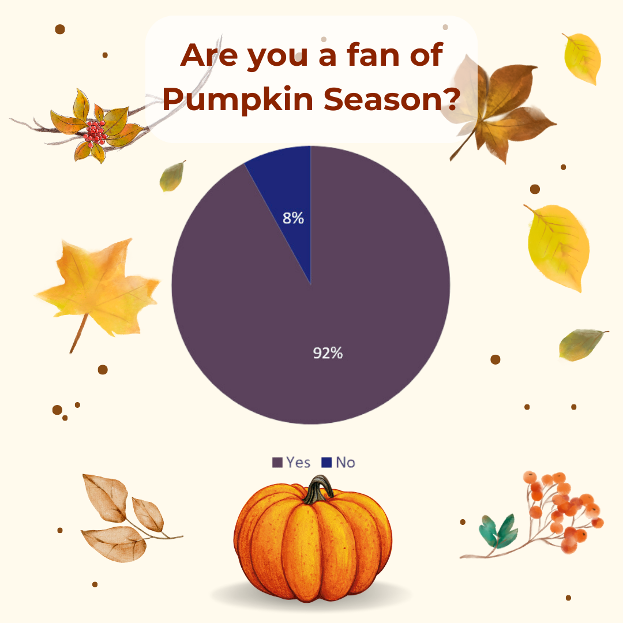
We had a few participants leave comments:
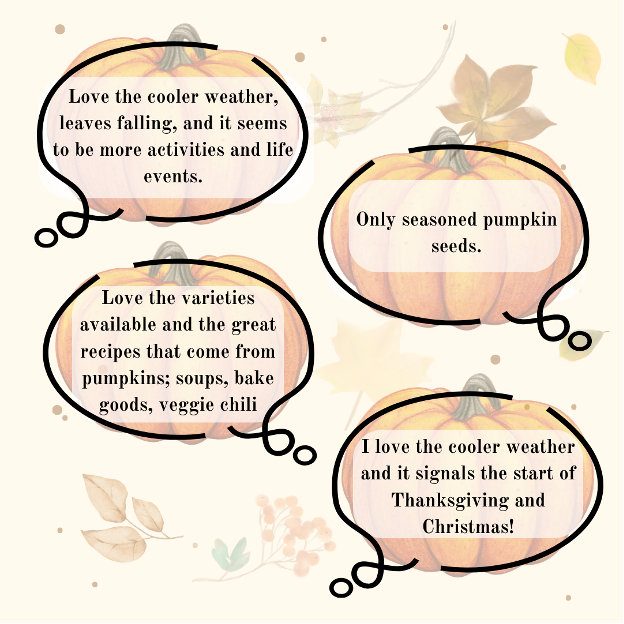
- "Only seasoned pumpkin seeds."
- "Love the cooler weather, leaves falling, and it seems to be more activities and life events."
- "Love the varieties available and the great recipes that come from pumpkins; soups, baked goods, veggie chili."
- "I love the cooler weather and it signals the start of Thanksgiving and Christmas!"
Love the cooler weather, leaves falling, and it seems to be more activities and life events.
Creative Spaces & Services
UTA Library Resources - Creative Spaces & Services
By: Lauren McLain & Mistie Maskil
Creative Spaces and Services, which you may know as the UTA FABLAB, is not only a space for faculty and students but it is also a space that staff may utilize as well, whether for personal or professional projects. We had the opportunity to get the details from Lauren Stutler, the Director of Creative Spaces and Services. All it takes is a little training, which you can get from student workers or expert staff, or more structured training for specific equipment. You can request consultations to assist in your project. FabLab users can provide their own pre-approved materials or pay only the price of materials via MavMoney.
The Creative Spaces and Services (CSS) is a dedicated department nestled within the UTA Central Library. It strives to empower students, faculty, and staff, regardless of their experience level, by offering a plethora of resources and opportunities for crafting an array of digital, tangible, and imaginative projects. The space is broken up into three sections: The Studios, The FabLab, and The Basement.
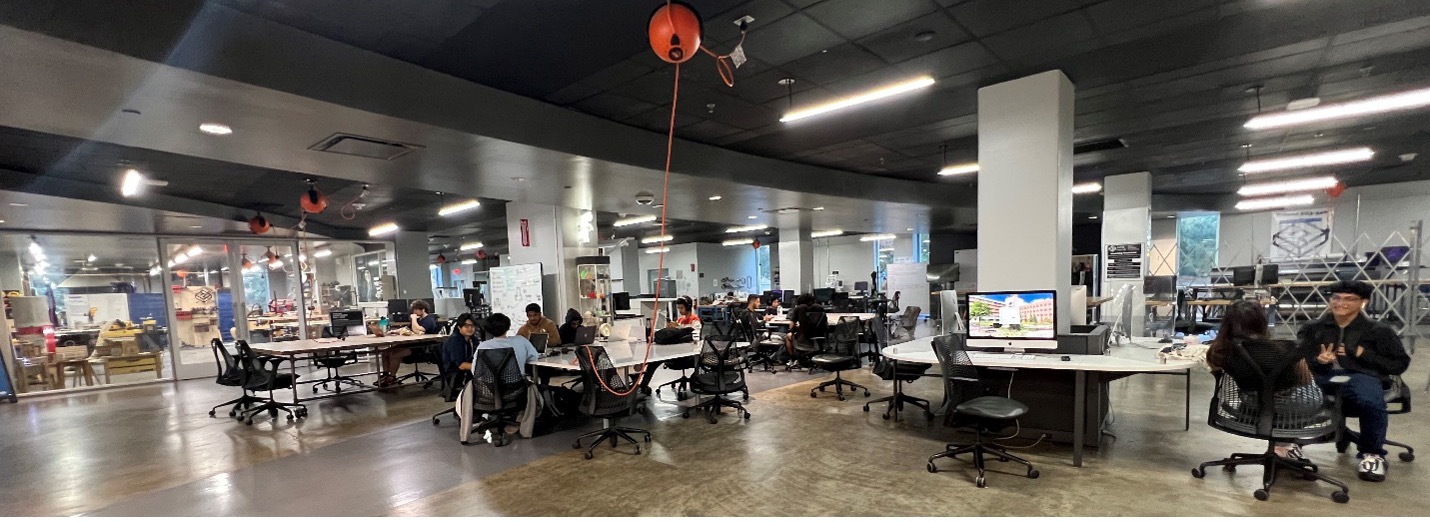
Image of the FabLab side of the Creative Spaces and Services Photograph
The Studios
A hub for inspiration and innovation, where you can bring your digital art and audio projects to life. This area is located on the northside of First Floor. Offerings encompass green screen facilities, photography studios, sound recording spaces, poster design and printing, and drone building. Access to expert guidance is available from both students and dedicated full-time staff.
|
Sign Printing Area Photograph |
Audio Sound Booths Photograph |
The FabLab
A dynamic maker space designed to foster project-based, experiential learning for individuals across all disciplines and skill levels. The FabLab offers a comprehensive range of resources, including a workshop, 3D and vinyl printing, textiles, glass and ceramics studios, sewing equipment, and hands-on training to support innovation and entrepreneurial endeavors. The Work Shop will require more training due to specialized equipment such as plasma cutter, CNC router, welding and numerous power tools.
|
Glass & Pottery Area Photograph |
Sewing Area Photograph |
|
Workshop Area Photograph |
Green Screen Room Photograph |
|
Vinyl Sign Area with 3-d Printing in Background Photograph |
Tech Lending Display Table Area Photograph |
The Basement
A recreational zone designed to unwind and build connections throughout the day. Skilled students and staff are on hand to offer guidance in game development, while various gaming opportunities are available, including tabletop games, electronic gaming, console gaming, and PC gaming.
|
Basement Game Lounge Photograph |
Basement Gaming Center Photograph |
Additional information can be found on the CSS website or email them with specific questions.
Email: css@uta.edu
26 Years of Service
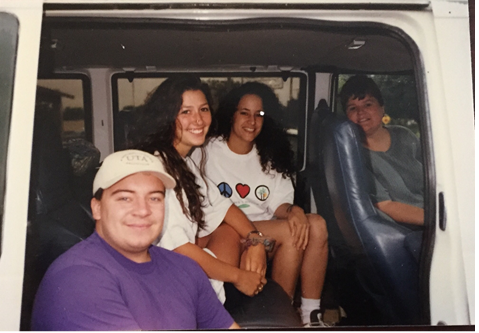
Mari Duncan is a lifelong Maverick who started with the University in August of 1997. It has come full circle for Mari, who started as a hall director in Trinity House and is now a director in the Residence Life Division. Trinity House as a dorm no longer exists but the building was rebuilt to accommodate OIT, faculty and administration. As a matter of fact, the view from Trinity Hall Room 104 is the same as Mari’s office back in 1997. She lived on campus as a Housing staff member for 10 years.
Residential life is cyclical in nature, but it is balanced with the unpredictability of 4,000 students living on campus. Mari reflects on her time at UTA as chapters in a book. With a tenure spanning 26 years, Mari has worked with many unforgettable people and forged numerous life-long friendships. Will Parker was one such person. He was the VP of Auxiliary for 40 years and was a solid rock for the institution. Another colleague with whom Mari worked with is Jared Peters, whom she considers as her “little brother.” He is now Dr. Jared Peters and a principal at a local school. She also appreciates the relationships she has with her longtime campus partners such as Eric Leidlein, Sharon Carey, Don Lange, and Molly Albart, all of whom she has worked with for many years, not to mention her current team within the Apartment and Residence Life. With so many people leaving lasting impressions, it is hard for Mari to choose with whom to have lunch with, but one person stands out – Chris Fulton, Executive Director of IT for Campus Operations. Mari has known Chris since she worked in Trinity House. Mari considers Chris to be brilliant, funny and quick witted, someone who looks at things through a different lens. So, savor the good times here on campus with the people you enjoy spending time with.
Mari received her Master and Doctorate degrees while working at UTA, and she juggled it with a family of four. Talk about work-life balance! Mari has started the tradition of touring colleges with her son. And she is the epitome soccer mom, who enjoys going to the games and cheering on one particular player. She takes great pride in watching her daughter play and grow as an avid soccer player at school and on a club soccer team.
We all know of Mari’s dedication to the university, but did you know that she likes to read historical non-fictions? Her favorite book is called The Boys in the Boat, a story about the US rowing team at the 1936 Berlin Olympics. Another couple of unknown facts about Mari is that she is a bargain shopper - who doesn’t like a good deal? - and she hasn’t drunk soda or caffeinated drinks for 18 years. We wish for many more chapters left in Mari Duncan’s tenure at UTA and wish for her, a happy ending.
Maverick Momentum Program
Elevating Success Through Collaboration in Mentorship: The Maverick Momentum Program
By: Sara Pezzoni
The Office of Talent, Culture, and Engagement’s (TCE) Belonging & Engagement division has developed a new collaborative mentorship program geared towards furthering professional development of Staff Advisory Council (SAC) committee members. Launching January 2024, the Maverick Momentum program is designed to develop a culture of belonging and engagement through mentorship, knowledge-sharing, and professional growth. The six-month structured mentorship program pairs SAC council member mentees with mentors that are managers or directors who have completed the MavsManager program.
Each mentee will be assigned a mentor that is well-suited for their strengths, skill set, and experience.
Prior to this program, the only mentorship program available to UTA employees was geared towards faculty, the UTA Faculty Mentorship Program offered by the Division of Faculty Success. The Maverick Momentum program’s facilitator, Veronique Jones, said this program fulfills the need for a staff-centered mentorship program. "Like the mentorship program offered to faculty, the goals of this program are to make sure participants in the program have an increased sense of engagement; to increase networking capacity of all involved; and encourage and facilitate professional growth. The feedback we received from the UTA People and Culture Survey showed that the biggest opportunities for growth involve employees feeling that others care about them and feeling that their opinions count,” Jones said.
Initial sessions of the program will include discussion of the mentee’s professional goals, establishing that the mentor-mentee relationship is rooted in achieving those goals. The sessions will then center around five themes: setting personal goals, personal marketing and branding; autonomous engagement; topic of solutions-orientation; and feedback and growth. Jones said that the goal for these sessions is to “really maximize on those conversations—they're not just informal conversations but they are conversations geared towards growing professionally.”
To join the Maverick Momentum program, mentees must be employed at UTA for at least six months, serve as a current SAC member, be in good standing with the university, and have supervisor approval to participate. Mentees are set to meet monthly with their assigned mentor for a minimum of one hour throughout the duration of the program, with a session conversation guide provided for each session. The program begins with a kickoff event to provide resources and tools needed for mentees to have a successful relationship with their mentor. At the conclusion of the six-month program, mentees will receive recognition for their participation at a capstone celebration.
According to TCE, participants in mentorship programs are five times more likely to be promoted than non-participants, and mentorship programs increase engagement, performance, and retention for mentees by 22 percent. For those interested in participating in the Maverick Momentum program, applications will reopen in the Fall semester. For more information, contact Veronique Jones at veronique.jones@uta.edu or visit TCE’s Training & Development website: https://www.uta.edu/hr/belonging-and-engagement/training-development.
Inside SAC
Inside SAC: A brief discussion with Christopher Templeton, Chair
By: Ashleigh Johnson
In a virtual meeting via Teams, I had the privilege of engaging with Christopher Templeton, Chair of the Staff Advisory Council (SAC), to delve into pressing questions that have been at the forefront of our collective thoughts.
One of the things that Chris mentioned is that right now, there are 20, yes 20, SAC representative positions available across campus. SAC can only operate so much without having the much-needed staff to fill these positions. There is a place on the SAC website to view the open positions but to make it easier, here they are:
- District 3 VP of Administration and Economic Development-7
- District 4 VP of Business Affairs-1
- District 8 Provost/VP of Academic Affairs-2
- District 9 VP of Research and Federal Relations-2
- District 12 Dean of the College of Education-1
- District 15 Dean of the College of Science-2
- District 17 Division of Student Success and Dean of the Honors College-2
- District 20 Dean of the Library-3
One thing very important to Chris as Chair is to have an open line of communication with the Community and with UTA Leadership. This means ensuring SAC is following procedures and setting up systems to allow for monitoring incidents/issues that are brought to SAC so that patterns are easily established and are then able to be addressed. Ideally, the goal for SAC meetings is an information-driven session, focused on problem-solving, and an open line of communication for sharing information, “Keeping a careful eye to limiting distractions that can take away from SAC making a true impact.”
Something else we discussed was about equity vs. equality. How you can approach your supervisor with “How can you provide equity for me as an employee within this department.” While every position in a department will not be the same, there are ways that you can work towards having equity in your role. Track your tasks and roles and gather data. Make sure that you’re showing what you can do in the office, or if you’re able to work from home. Chris had suggested (upon approval from the general body of SAC), providing resources for employees to be able to track their work, discuss with their supervisor, etc.
As someone who has never been involved with SAC and has only heard mundane things about it in years past, I really see a positive change coming with Chris and the Executive Board of SAC. There is a sense of urgency to correct, advocate, listen, challenge, and overall be what the UTA Staff needs.
While preparing for this article, I did some digging and learned that SAC does not currently have a Mission Statement. I was surprised but got to work with some new verbiage and will present it at the next SAC meeting for discussion and potential adoption of a new Mission Statement, so stay tuned to see what we create.
If you’re reading this and you’re not a part of SAC, but you have the passion and desire to help the University, send us an email to SAC@uta.edu. Let us know you exist. Find your district and get more information on how to become a SAC member. Without SAC, the staff voice isn’t loud enough. Even if you are not SAC eligible yet, you might be new, I would encourage you to get yourself on SAC's radar. SAC doesn’t know you’re out there unless you talk to them.
I’ll leave you with a quote from Chris regarding his role as Chair with SAC, “As SAC Chair, I want to forge new partnerships across the University and fortify long-lasting partnerships with new energy. The reason for this is so the Staff at UTA can have a far-reaching voice."
Sharing Your Voice: Submit Your Suggestion
Sharing Your Voice: Submit Your Suggestion
By: Mistie Maskil
Dear SAC Community,
The Staff Advisory Council (SAC) is built on the foundation of collaboration, communication, and community. It's about empowering the voices of our staff members, ensuring that their stories, experiences, and insights are heard and valued. To further this mission, we're excited to invite each and every one of you to contribute to our collective narrative.
Your Stories Matter: Share Your Interests
Each member of our SAC community has a unique perspective, a wealth of experiences, and a treasure trove of insights. Whether you have a compelling personal journey, an innovative solution to a common workplace challenge, or simply a topic that you believe merits discussion – your input is invaluable.
We're pleased to introduce the "Interest Story Suggestion Form," a platform designed with you in mind. This form allows you to propose topics, themes, or areas of interest that you'd like to see featured within our SAC Newsletter. It's your chance to suggest stories, articles, or discussions that resonate with you and our diverse community.
Why Your Input Matters:
Your suggestions are the lifeblood of our community. By sharing your interests, experiences, and ideas, you contribute to a more vibrant and responsive SAC. Your stories can inspire others, shed light on important issues, and spark meaningful conversations.
Furthermore, SAC is committed to amplifying your voices and celebrating your contributions. We aim to feature selected interest stories on our website and newsletters. Your insights could have a positive impact on our entire community.
Get Involved Today:
We encourage each member of the SAC community to take a moment to visit our website and submit an Interest Story Suggestion Form. This is your opportunity to help shape the content and direction of our communications, making them more relevant and engaging for everyone.
We believe that every story shared brings us closer together and enriches our community. Let's continue to build a SAC that represents the diverse experiences and perspectives of our staff members.
Thank you for being a part of our SAC journey, and we look forward to hearing your story suggestions.
Years of Service – Resident Tree Hugger
Years of Service – Resident Tree Hugger
By: Lauren L McLain
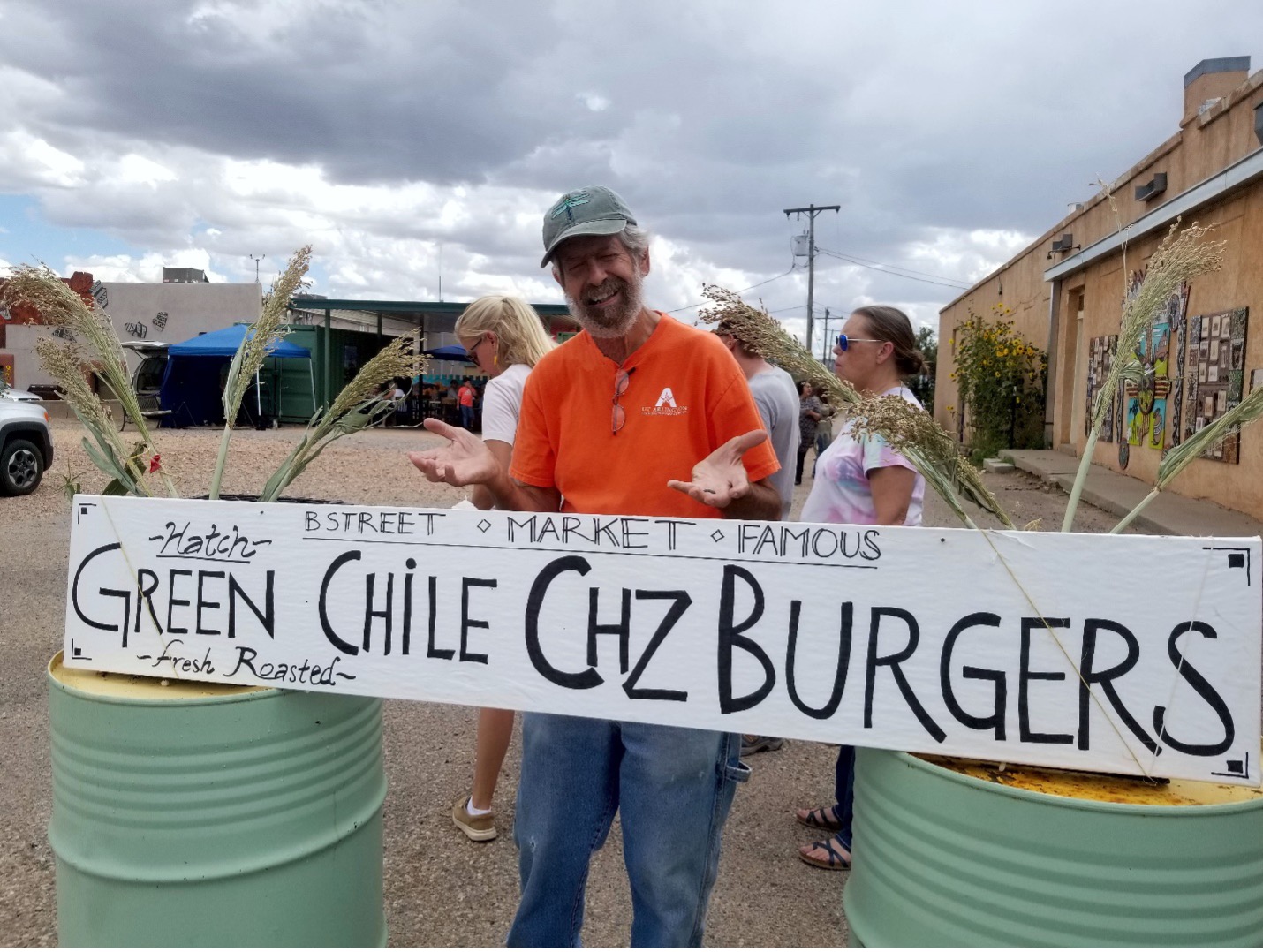 Our Campus Composter, John Darling, started with the University in 1963 when it was known as Arlington State College. John was a biology sophomore work-study student whose main duty as an unofficial Collection Manager was to prepare specimens and catalogue them. They remain today in the Amphibian and Reptile Diversity Research Center by the stadium. One memorable person with whom John worked at the university was Dr. William Pyburn, who was a professor in biology. John joined him on a trip to Mexico as a research assistant in the summer of 1966. This inspired John to get his master’s in biology from the University of New Mexico.
Our Campus Composter, John Darling, started with the University in 1963 when it was known as Arlington State College. John was a biology sophomore work-study student whose main duty as an unofficial Collection Manager was to prepare specimens and catalogue them. They remain today in the Amphibian and Reptile Diversity Research Center by the stadium. One memorable person with whom John worked at the university was Dr. William Pyburn, who was a professor in biology. John joined him on a trip to Mexico as a research assistant in the summer of 1966. This inspired John to get his master’s in biology from the University of New Mexico.
John’s biology background naturally progressed to his love for nature, and he wanted to do more to save it. After taking a City of Arlington composting class, he realized the value of composting. Sir Albert Howard, who was a pioneer in organized composting and is considered the father of modern organic farming, is someone whom John admires and would like to share a meal with.
In his current role, John aims for accomplishing two things daily: to divert waste from the landfill and to make a useful product from that waste for UTA - the compost which is used in landscaping throughout the campus. As part of the Facilities Grounds Shop, John Darling is an old nature lover who has fallen into a perfect job that combines his passion for conservation with a nice level of physical activity. When not working, John likes to bird watch with his wife Grace, who came to the US as a Cuban refugee. Grace’s 30+ years as a medical editor for UTSWMC has afforded them many opportunities to see birds in their native environments.
If John has an advice to give to his younger self, it would be to “hope for happy accidents that can give you a meaningful job, one that seems worthwhile and leaves you feeling grateful.” This is evident in his early beginning as a student worker and research assistant, and now as a campus composter. Composting is science at work and John Darling is someone who genuinely enjoys his job!
Reindeer Deco Mesh Christmas Wreath
By: Lori Danyl CarterMake my super easy Reindeer Deco Mesh Christmas Wreath this year to hang on your front door. A few supplies and some time are all you need!
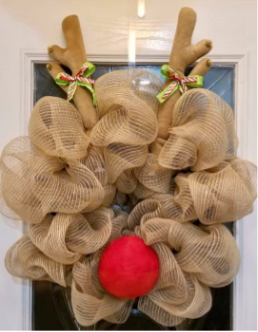
Open the Accordians Below for Materials List and Instructions
Materials Needed
- 1 – 10” Roll Tan/Khaki Deco Mesh from Hobby Lobby
- 1 Package of Pipe Cleaners (preferably in the same color as the deco mesh)
- 1 – 16” Wire Wreath Form
- 1 – Package Reindeer Antlers for Car (Hobby Lobby/Walmart)
- Your choice of ribbon
- 1 – package small jingle bells
- Zip Ties
- Glue Gun / Glue Sticks
- Scissors
- Wire Cutters
Instructions

- Twist the pipe cleaners tightly around your wire wreath form at every break on the inside edge and on the outside edge all the way around. (See photo)
- Open your 10” deco mesh, gather the end, and place it on an inside pipe cleaner, twisting it three times and securing it in place. You are going to work around the inside circle first.
- Measure out 10 inches, then gather the mesh together with your fingers and come up and put the mesh in the next pipe cleaner on the inside circle and twist tightly three times, making a “poof”.
- You will repeat this process until you have made all of the inside circle “poofs”.
- Once the inside “poofs” are complete, do not cut the mesh. Now, cross over to the outside circle and continue the process until you have made all “poofs” around the outer circle on your wreath form.
- At the very end, on the last “poof”, once you have twisted the mesh in the pipe cleaner, cut the mesh off close to the base of the frame.
- You should now have a “poofy” mesh wreath base and ready to add embellishments.
- Dab some hot glue on the back of the big red nose and place it on the wreath towards the bottom and then pull the wires through to the back and twist tightly and make sure the nose is secure.
- Use wire cutters and cut the hard plastic off the bottom of the antlers.
- Dab some hot glue to the back of each antler and hold it down in place towards the top of the wreath.
- Once the glue has dried on the antlers, take a zip tie, wrap it around the front, thread it to the back, and pull it tightly to secure the antler/s in place.
- Add a bow to the front of each antler. Use the ribbon of your choice. Make it as big or small as you want.
- Add a little jingle bell to the point of each antler.
SAC's 5th Annual Staff Conference - Bringing UTA Together
Posted on Thursday, June 8, 2022
The Staff Advisory Council is bringing back its first in-person conference since 2019. The conference connects faculty and staff across campus while providing opportunities for employees to network and learn from each other...Read more about the SAC Conference, click here.
HR Wellness Resources
Posted on Thursday, June 8, 2022
This month, we interviewed Latoya Oduniyi, the University Wellness Coordinator in Human Resources. We asked her a few questions about the current wellness programs and plans for the future of opportunities in wellness for faculty and staff....Read more about HR Wellness Resources, click here.
SAC Membership Information
Posted on Thursday, June 8, 2022
Are you new to campus or only recently hearing about the Staff Advisory Council (SAC)? We sat down with our SAC President, Alicia Gill, to get the What, Why and How of being involved in SAC... Read more about SAC, click here.
Stepping Toward Sustainability with UTA Libraries
Posted on Thursday, April 5, 2022
Milaun from UTA Libraries helps us realize how we can practice sustainabilitywhile we are at home and at work...Read about sustainability, click here.
Mental Health: Spring Cleaning Your Mind
Posted on Thursday, April 5, 2022
In the past two years, many of our lives have changed drastically, and therefore, we have had to reshape the way we think, behave, feel, and react to the circumstances around us... Read more about Mental Health, click here.
The SAC Roundup Newsletter is Now Available
Posted on Thursday, April 5, 2022
Enjoy the Staff Advisory Council's latest newsletter! This edition of the SAC Roundup offers the latest news on diversity, equity, inclusion, and more... To read the SAC Roundup, click here.
Posted on Tuesday, January 25, 2022
The Staff Advisory Council (SAC) is dedicated to enhancing employee morale, improving the work environment by uncovering opportunities for improvement and offering suggestions that will lead to positive change... Read more about our Core Initiatives.
Delivering a Customer-Focused HR Organization
Posted on Tuesday, January 25, 2022
Human Resources is expanding its customer-focused organization by incorporating core values, learning and development, and streamlined processes... Read more about Human Resources.
The First Exclusive Glimpse into MavREAD
Posted on Tuesday, January 25, 2022
The Office of Diversity, Equity, and Inclusion (DEI) and the UT Arlington Libraries hosted its first MavREAD event, which invited employees to share experiences and insights into the book, The Sum of Us... Read more about MavREAD.
